
- All Group Tours 2024
- All Group Tours 2025
- Signature Tours (Non-Anime)
- Cherry Blossom Season
- Anime Related Tours
- Search Tours
- Tour by theme
- Cherry Blossom
- Anime / Manga / Game
- Highlights Japan
- Signature Tours
- Festival Tours
- Grand Tours
- Southern Japan
- Hokkaido & Northern Japan Tours
- Quilt Tours
- Snow Monkey
- Japanese Ancestry
- All Private Tours
- Cruise Connection Tours
- Custom Tours
- Last Minute Deal
- Offers & Specials
- Destinations
- Experiences
- Trip Advisor's Must-See
- Brochure Request
- Japan Tour Movies
- Terms & Conditions
- Trip Reviews
- Guest Login
- Tour Airfare
- Airport Transfer
- How to Book
- Travel Tips

Travel Insurance
- Documents Download
- USA/Canada 1-800-285-2726
- Australia (02) 8006 4411

- View Saved Tour
US/Canada Toll Free
1-800-285-2726
- US/Canada Toll Free 1-800-285-2726
- Australia (02)8006 4411
8 Days The Last Shogun & Samurai | Highlights of Japan
- From Tokyo To Kyoto(Osaka)
- Wednesday, December 20, 2023 Updated
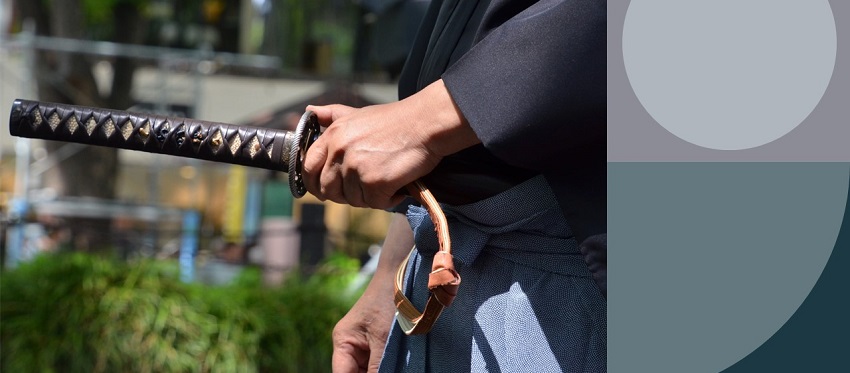
Related Flier
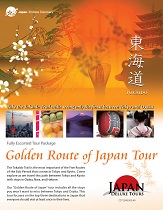
Tour Descriptions
- Dates & Quote
- Accommodations
Tour Departure and Prices 1) Price per person. 2) Airfare is not included.
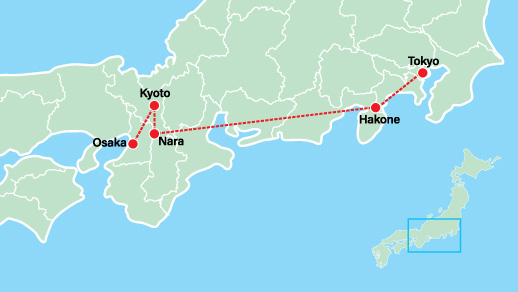
Tour Includes
- - Travel Insurance
- - Optional Excursions
Travel Highlights
Important information, maximum group size.
The maximum number of participants will not exceed 26 people during your Japan tour. Your group may be joined with other tour groups during the tour. Please note that your bus and tour guide may be changed if other groups join the tour.
Single Supplement
Single travelers are required to pay a single supplement in order to guarantee single room accommodation.
We request one suitcase, one carry-on bag, and an overnight bag per person. The tote bag we provide can be used to hold any small merchandise/souvenirs purchased during your tour. When you check out, bring your luggage to the lobby and the bus driver will assist in loading it onto the bus. When you arrive at the next hotel, the bus driver will unload your luggage for you to bring to your room. Please note: The maximum weight of a checked in bag is typically 20 Kilograms or 44 Pounds. You will be traveling with your luggage except during the bullet train ride (if applicable).
Accommodation
All hotel rooms come with a full bathroom and room amenities free of charge unless stated otherwise.
Transportation
All motor coaches come equipped with air-conditioning, plenty of space, comfortable seats, and Wi-Fi.
International Flights
All of our tours begin in either Tokyo or Osaka/Kyoto. When beginning or ending a tour in Tokyo, please book flights to or from Narita International Airport or Haneda International Airport. For tours beginning or ending in Osaka/Kyoto, please book flights to or from Kansai International Airport or Itami Airport. We recommend you do not book your flights until the tour status changes from Book Now to Guaranteed Departure . You can also contact us if you would like for Japan Deluxe Tour's to arrange your flights.
Fitness & Shoes
Traveling and visiting sights in Japan includes a good amount of walking. To fully enjoy the tour, please be prepared to keep up with the pace of the group, climb stairs with no difficulty, and wear comfortable shoes for all day use.
Guests with tattoos may not be able to use the hot-springs or onsens while in Japan. We apologize if you are unable to enjoy this experience during your stay.
Meals & Dietary Requirements
Please notify us before your tour starts if you have any dietary restrictions or requirements we should be aware about. Japan Deluxe Tours can provide Vegetarian meals for guests, and we will do our best to cater to any serious allergies or dietary restrictions. We will not be able to substitute or change meals after your tour begins.
- B :Breakfast
Dining Experience
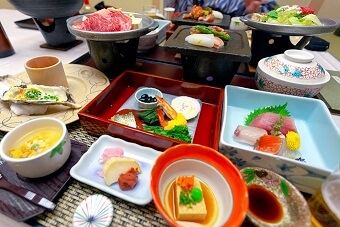
Kaiseki Ryori
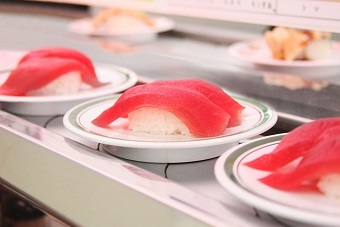
Kaiten Sushi
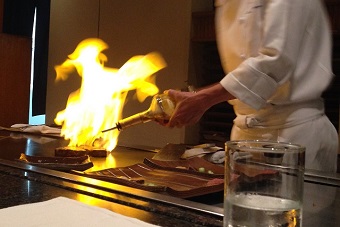
Teppan-Yaki Lunch
Cultural experience.
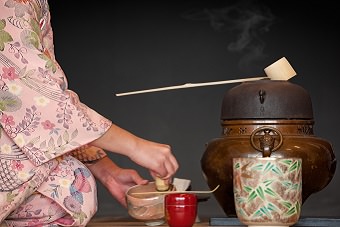
Green Tea Ceremony
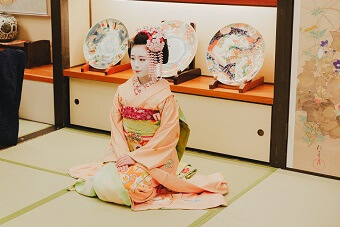
Maiko Dining Experience
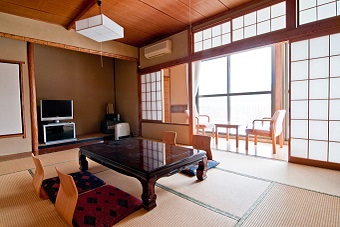
Japanese Style Hotel
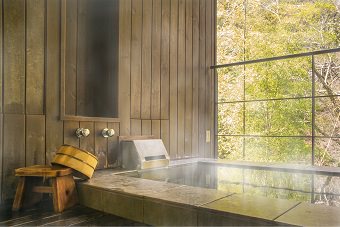
Sake Tasting
Riding experience.

Bullet Train
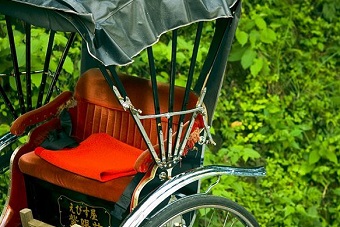
Hakone Ropeway

Keep connected to the internet during your tour with a data SIM Card. This only provides wifi connection, not a phone number. ※Please check if your device is compatible with the SIM Card. ※If you live outside the U.S., you cannot select the SIM card.
Customer Reviews
Book with confidence.
All small-group journeys are guaranteed to operate with just 6 guests.
- Detailed Itinerary
Reserve Your Air with Japan Deluxe Tours
Call for preferred rates through our partner.
Protect your investment.
Tour Standard
- All ground transportation
- All admission fees as listed
- Gratuities & Local Taxes
- Round-trip airport transfers
- licensed tour guide throughout

- 2 Weeks for Couple
- 2 Weeks for Family
- Thailand Lantern Festival
- Indonesia(Bali)
- South Korea
- China (HK, Taiwan)
- Itinerary Ideas
- Asia Highlights Travel Reviews
- Thailand Travel Reviews
- Vietnam Travel Reviews
- Cambodia Travel Reviews
- Japan Travel Reviews
- Myanmar Travel Reviews
- China Travel Reviews

8-Day Tokyo, Hakone, Kyoto, Hiroshima and Osaka Tour
Star your trip in Tokyo, a bustling metropolis pulsating with modern energy, and explore the serene landscapes of Hakone. Dive into Kyoto's rich heritage, visit Hiroshima to pay respects and witness resilience, and experience the vibrant city life in Osaka. This thoughtfully curated itinerary offers a perfect blend of history, tradition, and urban vibrancy. Ideal for travelers seeking a concise yet comprehensive exploration of Japan, from the modernity of Tokyo to the historic significance of Hiroshima and the dynamic spirit of Osaka. Book now for an enriching and captivating adventure through Japan.
We can customize this trip by adding anything you're interested in and scheduling days to fit your pace. We would happily organize a unique theme or activities for birthdays, young children, anniversaries, etc.
- Best For: Slow Pacers and Couples
- Departure date: Up to you
- Sample Price: On request
Discover real reviews of Highlights Travel Family 's best-rated service across trusted platforms.
Tour Highlights
Here are the fantastic attractions, the most must-do activities selected by Asia Highlights (AH Hand-Picked), and exclusive cultural experiences offered by Asia Highlights (Only With AH) included in this tour:
Learn about Japanese emperors by visiting the Imperial Palace and the Meiji Shrine.
Enjoy steaming matcha on a small island in the lake at hamarikyu garden ., experience the breathtaking scenery of hakone from multiple perspectives., absorb the profound message of peace in hiroshima ., suggested itinerary for inspiration.
The itinerary serves as a mere example of a personalized tour, designed exclusively for you. Your preferences will shape the authentic journey. We are fully prepared to craft an tailor-made tour that fulfills your desires.
Your private guide will be ready to meet and greet you at the arrival hall in Tokyo. A comfortable private car with an experienced driver will transfer you directly to your hotel. Your guide will help you to check-in.
Meiji Shrine: Commence your day at the serene Meiji Shrine, an homage to Emperor Meiji, an integral figure in Japan's history. Experience the tranquility of this sacred site, often bustling with traditional wedding ceremonies, a peek into Japanese cultural heritage.
Omotesando: Stroll down Omotesando, a broad, tree-lined avenue hosting flagship stores of top global fashion brands. Experience the stylish energy of this shopping street, known for its blend of modern and traditional architecture.
Asakusa & Sensoji Temple: Journey to Asakusa, a vibrant district capturing the essence of old Tokyo. Explore Sensoji, Tokyo's oldest temple, and meander through Nakamise, a historic street offering an array of local delights and traditional souvenirs.
Hamarikyu Garden: End your day at Hamarikyu Garden, an Edo Period Japanese garden harmoniously nestled amidst Tokyo's modern skyline. Experience the juxtaposition of traditional aesthetics within a futuristic cityscape. Take a serene moment to enjoy a cup of steaming matcha and Japanese sweets in a tranquil teahouse located on a small island within the garden's lake.
Hakone and Mount Fuji National Park Adventure: Escape the urban bustle of Tokyo and embark on a scenic 90-minute journey to Hakone, the gateway to the majestic Mt. Fuji and its surrounding national park. Your local guide will join you on the iconic "Romance Car" express train departing from Tokyo's vibrant Shinjuku station.
Zigzag through the Mountains on the Hakone Tozan Train: Hop aboard the Hakone Tozan switchback train, a thrilling ride that zigzags through the mountains, offering spectacular vistas of the surrounding valleys. The meandering journey provides unforgettable panoramic views of Hakone's natural landscapes.
Exploring the National Park's Marvels: Discover the diverse forms of transport available to delve into the wonders of the national park. Aboard the world's second-longest cable car, ascend Mt. Owakudani. Traverse over sulfurous fumes, bubbling hot springs, and thermal rivers in this volcanic expanse. Don't miss the opportunity to try a sulfuric hot spring-boiled egg, rumored to extend your life by seven years – an experience unique to Hakone's history and folklore.
Sailing Aboard the Majestic Pirate Ship: Embark on a voyage across Lake Ashinoko aboard a grand replica pirate ship, an ancient lake born from a volcanic eruption 3000 years ago. Traverse these historic waters and embrace the natural splendor of this breathtaking region.
Odawara (Hakone) to Kyoto by JR Train: Embark on an exhilarating train ride from Odawara (Hakone) to the historic city of Kyoto. Glide through picturesque landscapes aboard a JR Train in the comfort of the Standard Class. Revel in the convenience of a smooth, swift journey that spans approximately 2 hours and 6 minutes.
Get ready for a captivating day as you embark on a guided tour of Kyoto's cultural treasures and historical landmarks. Your knowledgeable local guide will navigate the city's comprehensive bus system, offering seamless travel to renowned World Heritage Sites.
Kinkakuji Temple (Golden Pavilion): Begin your day at this awe-inspiring temple, initially crafted as a shogun's retreat and later transformed into a revered Buddhist temple. Admire its splendor and picturesque setting, making it one of Kyoto's most iconic attractions.
Nijo Castle: Immerse yourself in the ornate architecture of this historic castle, surrounded by breathtaking gardens. Experience the intrigue of the famous "nightingale floors" and the captivating design that echoes the rich history of the Edo Shogunate.
Nishiki Market: Traverse a vibrant food hub! Stroll through this five-block-long market street, where over a hundred shops and restaurants offer a delightful array of fresh seafood, local produce, knives, cookware, and various Kyoto specialties. Discover the flavors of Japanese cuisine in a lively, bustling atmosphere.
Kiyomizu Temple: At the Kiyomizu Temple, relish panoramic vistas of Kyoto from the elevated veranda. Delve into the intriguing fact that the Main Hall and Veranda were meticulously constructed without nails or joiners. Although under repair, the temple remains a significant and picturesque Kyoto landmark.
Sanjusangendo: Visit this extraordinary temple, featuring Japan's longest wooden structure. Marvel at the 1001 statues of Kannon, the goddess of mercy. The center holds a magnificent wooden statue of a 1000-armed Kannon, flanked by an assembly of 500 statues on each side, creating a captivating sight.
Set off on an enlightening journey from Osaka to Hiroshima using the Shinkansen, where your accompanied journey takes you back in time to the tragic events of August 6, 1945.
Hiroshima Peace Memorial Park: Upon arrival, you'll step into the poignant landscape of the Peace Memorial Park, marking the ground zero of the Atomic Bombing. This solemn site pays homage to the lives lost in the tragic event. Stroll through the park adorned with memorials, monuments, and statues, and visit the museum that vividly portrays the impact of that fateful day.
Miyajima Island: A short ferry ride away awaits the serene Miyajima Island, a place steeped in Shinto traditions and natural beauty. Here, you'll encounter the iconic 'Floating Torii Gate,' one of Japan's most photographed sites. This sacred gate belongs to a shrine rooted in ancient history and masterful architecture, recognized as a UNESCO World Heritage Site. Explore the harmonious shrines, temples, and picturesque surroundings, tasting local delights such as the famous maple-leaf shaped cakes.
Osaka Castle: Dive into the grandeur of Osaka Castle, an iconic symbol deeply rooted in Japan's history. Renowned for its crucial role in Japan's unification, this reconstructed masterpiece stands true to its original form, housing a modern museum that narrates Osaka's rich past.
Dotonbori: Wander through the energetic district of Dotonbori, once a theater hub now transformed into a bustling food haven. Indulge in Osaka's famed takoyaki, savory octopus dumplings that are a quintessential street food, amidst the lively streets teeming with vibrant neon signs and culinary delights.
Kamigata Ukiyoe Museum: Discover the beauty of 18th-century Japanese prints at the Kamigata Ukiyoe Museum. If available, engage in a hands-on woodblock printing experience to create your own art piece, a unique and immersive way to connect with Japan's artistic heritage.
Umeda Sky Building: Ascend the impressive Umeda Sky Building, a soaring 173-meter-high structure that offers a breathtaking panorama of Osaka's skyline. At the "Floating Garden Observatory" on the 39th floor, enjoy sweeping views of the cityscape and beyond, providing a captivating visual treat.
Our guide will help you transfer from your hotel to Osaka Airport for departure with independentcar/van and guide.
Our Service Includes:
- Private transfers and English-speaking tour guide
- All guided sightseeing as detailed in the itinerary
- Hand-picked star-rating accommodations
- Breakfasts at hotels and lunches for every guided day
- Governmental taxes
Tour code: ah-jp-cx-8
Inquire now! Your 1:1 travel consultant will reply within 1 working day.
How would you travel.
Adults number (age ≥ 18 years old)
Children number
10-17 yrs old
3-9 yrs old
0-2 yrs old
What's your hotel choice?
When would you travel.
I prefer to be contacted via:
Why Asia Highlights (10,000+ reviews & 98.8% 5-star rating)
- Save Your Time:
- Less research, more enjoyment!
- Real-time 1V1 expert planning
- Maximize Your Flexibility:
- Personal local guide and ride
- Explore at your own pace
- Celebrate Your Journeys:
- Specially-crafted family adventures
- Celebrate milestones with style!
- 10-Day Japan Cherry Blossom Spring 2025 Mini-Group Tour
- 2-Week Japan Private Family Vacation
- 12-Day Classic Japan Tour
- 9-Day Japan Highlights Tour
- Plan a Family Trip to Japan 2024/2025: Experiences and Itineraries
- Plan a Japan Cherry Blossom Trip 2024/2025, Dates and Avoid Crowds
- 12 Days in Japan: Top 4 Itineraries for First Visit 2024/2025
- 1 Week in Japan: Top 5 Itineraries for First Visit 2024/2025
- Japan Weather in January: Travel Tips for First-Timers
- Japan Weather in February 2024: Travel Tips for First-Timers
- Japan Weather in March 2024: Travel Tips for First-Timers
- Japan Weather in April 2024, Travel Tips (for First-Timers)
- Japan Weather in May 2024: Travel Tips for a First Visit
- Japan Weather in June 2024: Coolest Summer Month, Travel Tips for First Visit
- Japan Weather in July 2024: Full of Festivals, Travel Tips for First Visit
- Japan Weather in August 2024: Travel Tips for First Visit
- Japan Weather in September, Travel Tips (for First-Timers)
- Japan Weather in October 2024: Travel Tips for First-Timers
- Japan Weather in November 2024: Best Autumn Month, Travel Tips
- Japan Weather in December 2024: Travel Tips for First-Timers
Get Inspired with Some Popular Itineraries
At Asia Highlights, we create your kind of journey — your dates, your destinations, at your pace. You can have any trip tailor made for your travel.
More Travel Ideas and Inspiration
Sign up to our newsletter.
Be the first to receive exciting updates, exclusive promotions, and valuable travel tips from our team of experts.
Why Asia Highlights
Where can we take you today.
- Middle East
- African Safari
- Travel Agents
- Loyalty Program
- Our Differences
- Privacy Policy
Address: Building 6, Chuangyi Business Park, 70 Qilidian Road, Guilin, Guangxi, 541004, China
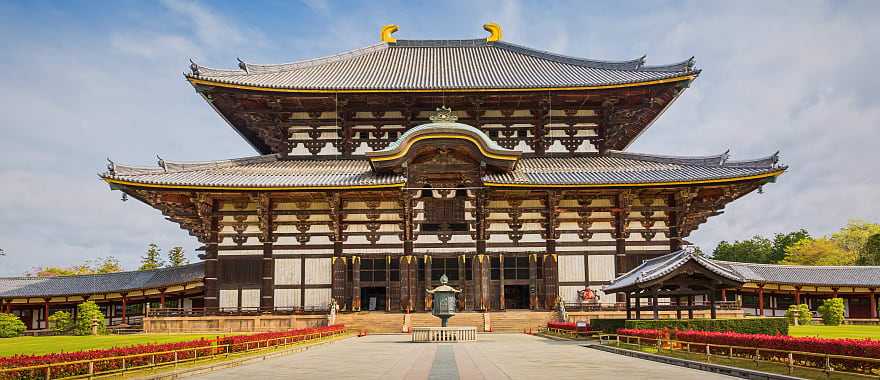
Discovering the Past and Present of Japan Tour
Customers rate Zicasso's travel referral service 5 on a scale of 1 to 5 based on 1537 reviews on Trustpilot
We match you with top tour companies that specialize in the trip you want, whether it's a customized private tour or a group tour.
- Trip Overview
This is a sample itinerary to inspire a personalized trip designed with your travel specialist
Request a Quote
Countries Visited
Places visited, suggested duration.
Your luxurious 14-day Japan historical tour will take you through time to experience culture and tradition. You can indulge in delicious cuisine unchanged for generations and witness religious rites that predate customs from the European Middle Ages. Meet with master artisans and sample exquisite sake. Your experience will immerse you in the majesty, wonder, and ritual of Japan that offer unparalleled lessons that will last a lifetime.
Customizable Itinerary
Tokyo – arrival and welcome dinner.
Arrive at Narita International Airport in mid-afternoon and meet your guide just outside immigration. You ride an express train to the city center and check into your luxury hotel. After a chance to freshen up, you dine on a specially prepared welcome dinner at a family-run restaurant known for its succulent Kobe beef that melts in the mouth.
What's Included:
Tokyo – A Mix of Modern and Ancient
Arguably the capital of the world, Tokyo presents the first time visitor with a multitude of first impressions, many of them contradictory. Teenagers dressed in the wildest fashion trends ride the metro alongside the most formal businessmen. Just around the corner of any ultra-modern office building might be a centuries-old shrine or temple. Today, explore the present and the past at your own pace.
In the early morning, take a leisurely walk through Meiji Park, a peaceful oasis in the middle of Tokyo’s urban chaos. Deep inside the park, you hear only the gentle rustling of birds’ wings and the brooms of Shinto priests sweeping Meiji Shrine. There is no smell of exhaust, just a hint of incense floating on the air. Before entering the shrine, learn how to purify yourself and offer prayers to the gods, traditions that the Japanese have followed since the beginning of their recorded history.
Leaving Meiji Park, ride the Tokyo subway to your next destination, the Ginza District. As you climb up the subway steps to street level, you are greeted by the iconic Wako Department Store, one of the few large buildings in Tokyo to survive the Second World War. Ginza’s stores sell everything from robots at the Sony Showroom to the latest fashions at Hermes.
The options for lunch are limitless. If money is no issue, Tokyo’s fine dining restaurants have won more Michelin stars than Paris. If food on-the-go is more your style, try the Japanese take on fast food at Freshness Burger, or pack yourself between the throngs of loud salarymen at one of the many conveyor belt sushi restaurants outside Ueno Station.
In the afternoon, get a bird’s eye view of the city from the Tokyo Skytree. You can see fifty miles in any direction from the observation deck, including glimpses of the iconic Mount Fuji in the west. For risk takers, stand on the observation deck’s glass floor to catch the view 1,500 feet below you.
As afternoon turns into evening, your dinner is at Kaikaya, a cozy restaurant featuring a wide variety of sushi. No matter your particular sushi tastes, each bite carries the faintest hint of the ocean, a hallmark of the finest Japanese sushi.
After your meal, step out into the Shibuya nightlife and let the flashing neon, blaring advertisements, and endless crowds bombard your senses. Take part in Shibuya’s famous scramble crossing, where traffic stops in every direction to let thousands of people cross the street at once. While in Shibuya, don’t forget to say hello to Hachiko, a statue commemorating a loyal dog who waited for his deceased owner for years just outside the station’s entrance.
Tokyo to Obuse – Witness Traditional Art and Serene Nature
The modern world melts away as you travel by train from Tokyo. From your seat, watch concrete and asphalt transform into tree-covered mountains, deep ravines, and rushing rivers.
Your destination is Obuse, a ‘small’ town of only 11,000 people where ancient traditions are still practiced. Your first stop in Obuse is the Hokusaikan Museum. Hokusai was the master of Ukiyo-e , traditional woodblock printing that has defined Japanese art for over two centuries. In this museum, once home to Hokusai, learn all about this traditional art and view some of Hokusai’s most famous pieces in an intimate setting.
Like Ukiyo-e , sake brewing is one of Japan’s oldest traditional arts. At the Masuichi-Ichimura Sake Brewery, the air is heavy with the strong smell of yeast as your guide instructs you on the brewing of Japan’s most famous beverage. At the end of the tour, sample a wide variety of sake during a private tasting. If you prefer to pair your sake with food, your guide can arrange a lunch reservation at the brewery’s award-winning restaurant.
After lunch in Obuse, take a scenic walk to the Yudanaka Onsen. Onsens , naturally occurring hot springs, are popular with both Japanese people and the country’s wildlife. At Yudanaka, view the famous snow monkeys enjoying the warm waters.
In the evening, check into a minshuku , a renovated travelers’ inn dating back to the 18th century. You room features straw mat floors know as tatami , along with sliding rice paper doors. Along with its historical charm, this and all inns on the tour offer all modern amenities you would expect in a western hotel.
In your room, don a yukata , a traditional Japanese robe designed for relaxation and comfort. A hotel attendant delivers dinner to your room: fresh meat and vegetables harvested from across the region.
Obuse to Narai – Your First Steps on the Nakasendo Trail
During the Edo Period (1615-1868), thousands of travelers walked the Nakasendo trail between Tokyo and Kyoto. Like any modern freeway, towns sprung up to offer travelers rest and relaxation. Today you become one of these travelers as your travel from Obuse to Narai.
Upon arrival by train in Narai, you are taken aback at how the city’s main boulevard has not changed in centuries. Feel like a local as your tour some of the perfectly preserved homes open to the public. For lunch, you have your choice of one of Narai’s many restaurants offering a wide range of cuisine from the surrounding Kiso Valley.
In the evening, check into your hotel, a renovated Edo Period home run by a local family. Along with a tour of their home, the owners teach you about the house’s history, which as of tonight you become a part. Like in Obuse, dinner is served in your room.
Narai-Tsumago-Magome – Travel the Trail
Unlike travelers centuries ago, you travel the Nakasendo trail by rail and bus rather than on foot. In Tsumago, your guide takes you on a tour of the city folk museum.
After an introduction to the town, visit the Rurisan Kotoku-ji Temple. With the main structure dating back to 1500, the original floors produce the sound of chirping birds when walked upon. At the entrance, take shade under a cherry tree that dates back to the temple’s founding.
In the afternoon, you travel by bus to Magome, another famous stop on the Nakasendo trail. Besides everything you would expect in a traditional minshuku , your hotel this evening includes a sunken Japanese hearth and a bathtub made from hinoki , Japanese cypress. The faint smell of burning wood that drifts through your room takes you back to past centuries when countless travelers ended their day the same way.
Magome-Takayama - Where the Present Is Still the Past
Today you leave the Kiso Valley and Nakasendo trail to travel to Takayama, the crown jewel of Japan’s preserved past. Surrounded by snow-capped mountains reminiscent of The Sound of Music , Takayama’s isolation has ensured that its buildings, culture, crafts, and cuisine have barely changed since the 17th-century.
After arriving by train, your first stop is Takayama’s San-machi district, the city’s old town. Indulge in a rickshaw ride as your guide points out the shops and business that the same families have run for generations. After lunch, visit Takayama Jinya, the city’s government office during the Edo Period. As you walk barefoot over tatami mat floors, see where officials of the Shogun performed their duties, and where prisoners met their untimely end.
Dinner this evening is at Suzuya, a sukiyaki restaurant located in the heart of the San-machi district. The meat sizzles right in front of you on a private stove as waiters bring out platters of fresh vegetables picked from the Takayama valley. If you’re feeling adventurous, try some Hida beef sushi; the texture and taste rival the best raw tuna. While at dinner, be sure to pair your meal with sake from one of the city’s many breweries.
Takayama – Let Down Your Hair
There are many options available to fill up your day in Takayama. You might score a deal on some rice at the morning farmers’ market, where merchants from across the city come to sell their fresh produce.
Just outside of Takayama is Hida no Sato , the Hida Folk Village. This open air museum displays a collection of over thirty preserved homes and other structures from around the Hida region, some of which are over 500 years old. Each building is open for exploration, and some have burning fires to offer you the smells that greeted residents when they returned home each day. If you want to take home a unique souvenir, the village offers private classes that teach traditional Japanese sewing and quilting. If you are traveling during the winter, the village is one of the most photogenic spots in all of Japan, as heavy snow caps form on the homes’ thatched roofs.
If you are in the mood to sit back and relax, Takayama offers a variety of onsen baths. Great for couples, the hot mineral water in Takayama’s onsens is pumped directly from geothermal springs underneath the city.
For dinner this evening, your guide provides an array of dining opportunities from which to choose.
Takayama-Kyoto – Arrive at the Ancient Capital
You leave the mountains today, traveling by train to Kyoto. For the next three days, Kyoto is your base of operations as you explore Japan’s history, religion, customs, and cuisine.
Arriving in Kyoto in the early afternoon, your first taste of the city is its famous Gion District. Gion, once a stop catering to travelers, is now the most well-known geisha district in Japan. Though much of Kyoto is modern, the city has ensured that Gion retains the look and feel of the past. There are many options for experiencing Gion’s timeless charm, including a tea ceremony at a geisha house.
Kyoto cuisine is defined by its kaiseki restaurants, where artistic presentation is just as important as taste. This evening you dine at Nakamura, a three-Michelin-star restaurant that has perfected the kaiseki experience. Each course has no more than a bite or two, as the meal is a feast for the senses. You may even find yourself taking more pictures of your dinner than anything else in Kyoto!
Kyoto – Immerse Yourself in Japan’s Religious History
As it was Japan’s capital for over a thousand years, Kyoto is home to some of the country’s most famous temples and shrines. Just after dawn, watch the early morning light reflect off Kinkaku-ji’s gold leaf exterior. If the weather is calm and clear, witness a second Kinkaku-ji form in the still waters of the pond that surrounds the temple.
From Kinkaku-ji, you are off to Kiyomizu-dera, one of the most famous Buddhist temples in Japan. A UNESCO World Heritage site, the temple dates back to 778. From its main terrace, absorb the bird’s eye view of Kyoto and the surrounding mountains. The terrace is also one of the best places to view Kyoto’s fall foliage. And if you’re traveling with your spouse or significant other, make sure to walk between the ‘love stones’ to see if you’re a good match.
You arrive at Ryoan-ji Temple as midday turns to late afternoon. Constructed in 1499, the temple features the Hojo Garden, arguably Japan’s most famous rock garden. For over 500 years, the temple’s monks have maintained the garden’s design, raking the stones each morning to ensure that visitors can enjoy the garden’s depiction of nature. Here, take the time to mediate or simply relax. And with the temple tucked away in Kyoto’s northwest corner, lose yourself in the sounds of chirping birds and the gentle breeze.
In the evening, your guide provides a list of options for dinner.
Kyoto – Take a Walk Through the Past
In the early 20th century, Japanese philosopher Kitaro Nishida pondered the differences between Eastern and Western philosophy as he wandered an unassuming footpath among Kyoto’s canals and cherry trees. This morning, you follow in Nishida’s footsteps as you take the Philosopher’s Walk. Though the walk itself lasts only half an hour, you find yourself constantly pausing, as every corner seems to reveal a new shrine or different face of Kyoto’s natural beauty. If traveling in the spring, the Philosopher’s Walk offers the best hanami , or cherry blossom viewing, in all of Kyoto.
For lunch, take advantage of one of the many small restaurants visited by locals and tourists alike. Your guide is on hand to make recommendations based on your tastes, and can offer assistance in ordering food.
In the afternoon, your walking tour of Kyoto continues with a visit to Fushimi Inari-Taisha shrine. As you take the gentle path up the mountain, you walk under thousands of tightly packed torii gates. Torii marks the entrance to Japan’s Shinto shrines, and walking under one or more signifies your entrance into a sacred space. At the end of your journey, you arrive at the main temple with its many statues of kitsune , foxes, and excellent views of Kyoto. Take time to tour the temple’s many gardens before heading back down the mountain.
In the evening, there is time to rest in your hotel room before dinner at a local restaurant.
Nara – Get to Know Japan’s First Capital
Today you travel by local train to Nara, Japan’s capital from 710 to 784. Your first stop is Todai-ji Temple, the largest wooden building in the world. Though the building itself was rebuilt 1709 after an earthquake and fire, the 49-foot high bronze Buddha dates back to 752, when 10,000 monks participated in a grand ceremony to ‘open’ the Buddha’s eyes. Walk among the temple’s hundreds of cultural treasures, including galleries of artwork dating back over 1,000 years.
When Nara was Japan’s capital, its cuisine catered to both Japan’s ruling class and religious leaders. For lunch, choose to eat like an emperor (or monk) at a local restaurant. Be sure to try nyumen , one of the first noodle dishes imported from China to Japan. If Nara’s bold flavors should grab ahold of your palate, a variety of shops along Higaskimuki Shopping Street sell everything you’ll need to bring the taste of Nara to friends and loved ones back home.
There are many options to spend a pleasant afternoon in Nara. Stroll through Nara Park and get to know the friendly deer. Or if history is your passion, spend time in the Nara National Museum, viewing Japanese scrolls dating back to the 12th-century.
During your trip back to Kyoto, your guide provides a list of options for dinner. Freshen up in your hotel room before your last night out on the town.
Mount Koya – Experience Japan’s Religious Roots First Hand
Today offers a remarkably unique experience on your tour of Japan’s past. In the morning, say goodbye to Kyoto and board a local train heading south into some of Japan’s most mountainous terrain, where the dense canopy provides permanent shade on even the sunniest of days.
In the 9th-century, the monk Kobo Dashi chose Mount Koya for his temple after many years of wandering. For him, the location was ideal, as the mountain’s eight peaks resemble a blooming lotus flower. From this location, Shingon Buddhism was born. Today you step into the world where at over a hundred temples, monks continue the practices that Kobo Dashi started 1,200 years ago.
Your time on Mount Koya is much more than just observing local traditions. Your accommodations this evening are a Buddhist temple that has for centuries offered lodging to pilgrims and travelers. After settling into your room, a monk will take you on a private tour of the temple grounds.
As Buddhist monks abstain from meat, your dinner this evening is the same locally-harvested vegetarian cuisine that the monks prepare for themselves. After dinner, take in Mount Koya’s true beauty with a nighttime walk among flickering stone lanterns, temples, and cemeteries.
Mount Koya-Tokyo – Return to the Present Day
Rise early with the monks to participate in morning meditation and ceremonies. After breakfast, there is time for a final walk through Japan’s natural beauty as the morning fog burns away.
In late morning, say goodbye to Mount Koya and Japan’s past as you take the futuristic N700 shinkansen from Kyoto to Tokyo. Though the shinkansen travels at nearly 200 miles per hour, the ride is so smooth that you can balance a 100-yen coin on its edge. If hunger should strike during the journey, take advantage of the trolley service. Though prepackaged, these meals’ freshness matches any of the food you’ve had so far in Japan. If you wish to rest during the trip, upgrading to a seat in the Green Car provides a more luxurious seat and personalized service.
After arriving in Tokyo, there is leisure time in the afternoon to see one last of the city’s many sites before a farewell dinner at Kanda. An intimate dining experience, watch a three-Michelin-star chef specially prepare for you an unforgettable meal that might forever change your perceptions of fine dining. After dinner, check into your luxury hotel located in the city center.
Tokyo – Sayonara!
The last two weeks seem like a dream as you wake up on your last morning in Japan. After breakfast at the hotel, your guide sees you safely aboard an express train to Narita International Airport, where your flight home awaits you.
Trip Highlights
- Stay at traditional inns and a Buddhist monastery deep in the Japanese mountains
- Learn first-hand the secrets of Japanese art and design from master artisans
- Explore a 250-year-old sake brewery followed by an exquisite tasting
- Ride the famous Shinkansen, the Japanese Bullet Train, which is one of the fastest trains on Earth
- Visit the Todai-ji Temple, the largest wooden structure in the world
- Explore both the ancient customs of the secluded Takayama, as well as the futuristic attractions of Tokyo
- Dine at the finest 3-Michelin star restaurants in Tokyo and Kyoto
Detailed Description
Central Japan is a region known for its tall mountains, deep valleys, and rushing rivers. Many of the villages and towns in this region are untouched by the technological progress and fast-paced life in the big cities. Beginning in futuristic Tokyo, each stop on your journey sends you further into the past.
In feudal times, people traveling from Tokyo and Kyoto used the Nakasendo trail, an ancient highway running through the Japanese Alps. As you make your own journey from Tokyo to Kyoto by train, you become part of this historical tradition, visiting preserved villages and staying at local inns, some of which have been run by the same family for multiple generations.
In the Hida region, you visit the castle town of Takayama, a city isolated for centuries by the mountainous terrain. In the city center, take a private lesson from artisans who produce some of the finest lacquerware, pottery, furniture, and sake found in Japan. Just outside the city is Hida no Sato , the Hida Folk Village. In this open air museum, wander freely through Edo Period homes, and even participate in hand making the traditional crafts that defined the era.
From the mountains, travel by train to Kyoto, the seat of Japan’s government for over 1,000 years. Like the emperors of centuries past, in Kyoto, you dine on the best cuisine Japan has to offer. The cultural treasures once reserved only for Japan’s political and religious leaders are at your fingertips, as well.
Nara, Japan’s capital during the 8th-century, is a quick train ride from Kyoto.
Nara’s ancient temples and shrines are a testament to the glory and influence of Japanese Buddhism. The city’s main attraction is the Todai-ji Temple, the largest wooden structure in the world. Within its massive walls is a 49-foot high bronze Buddha, an architectural triumph that leaves you speechless.
Your last night before heading back to Tokyo is spent in a Buddhist temple lodging on one of Mount Koya’s eight summits. In the evening, wander among the thousands of ancient tombs and memorials in the Okunoin cemetery, the final resting place of monks who have called Mount Koya home since the 9th-century.
Along with the beautiful mountain landscapes and wonderful hot springs, each stop offers freshly made local cuisine, such as hida beef, miso bean paste, fresh tofu, and sansai-ryori , mountain vegetables harvested from the wild. Ideal for couples, this two-week tour is best taken in the fall or spring. Private guides fluent in English and Japanese are provided for you in every city.
Starting Price
$7,275 per person (excluding international flights)
Your Zicasso trip is fully customizable, and this sample itinerary is a starting place for your travel plans. Actual costs are dynamic, and your selection of accommodations and activities, your season of travel, and other such variables will bring this budget guideline up or down. Throughout your planning experience with your Zicasso specialist, your itinerary is designed around your budget. You can book your trip when you are satisfied with every detail. Planning your trip with a Zicasso travel specialist is a free service.
What's Included
- Accommodations
- In-country transportation
- Some or all activities and tours
- Expert trip planning
- 24x7 support during your trip
Your final trip cost will vary based on your selected accommodations, activities, meals, and other trip elements that you opt to include.
Reviews of Zicasso's Referral Service
4.85 stars based on 544 reviews.
Reviewed By Tina R.
Reviewed By Jack F.
Reviewed By Jan C.
Reviewed By Warren a.
Reviewed By Chandler M.
Reviewed By Peter C.
Expert Tips for Discerning Travelers
Your Dream Vacation
in 3 simple steps
Describe your dream trip
Get matched with top travel specialists
Book the trip
Help Me Plan My Trip
Free service - no credit card required
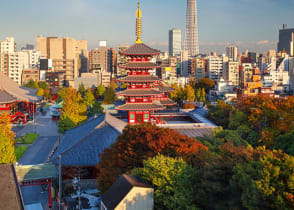
TTC family of brands
My Trafalgar
Destinations
Get Inspired
866 513 1995

See All Japan Tours
Trending Japan tours
Save up to $689
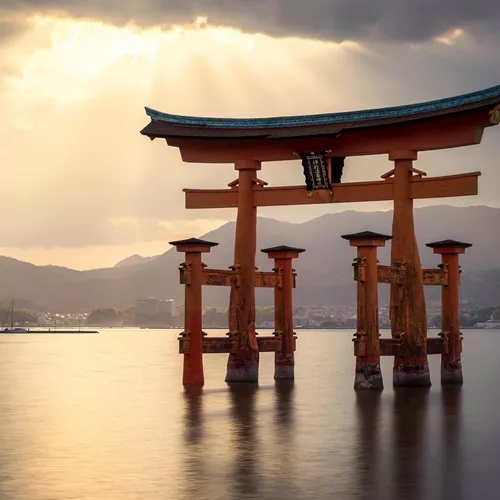
Splendours of Japan
9 Locations
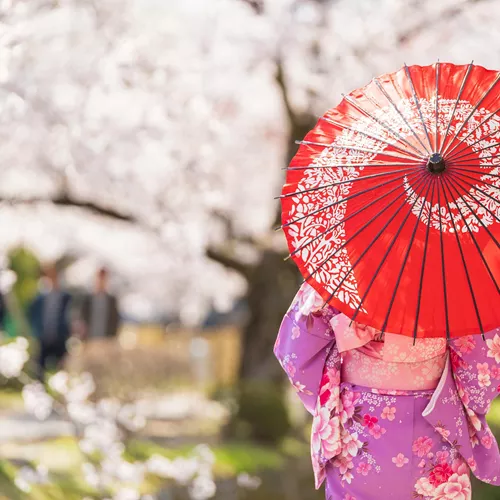
Classic Japan
6 Locations
See More Japan Trips
5 million happy guests and counting
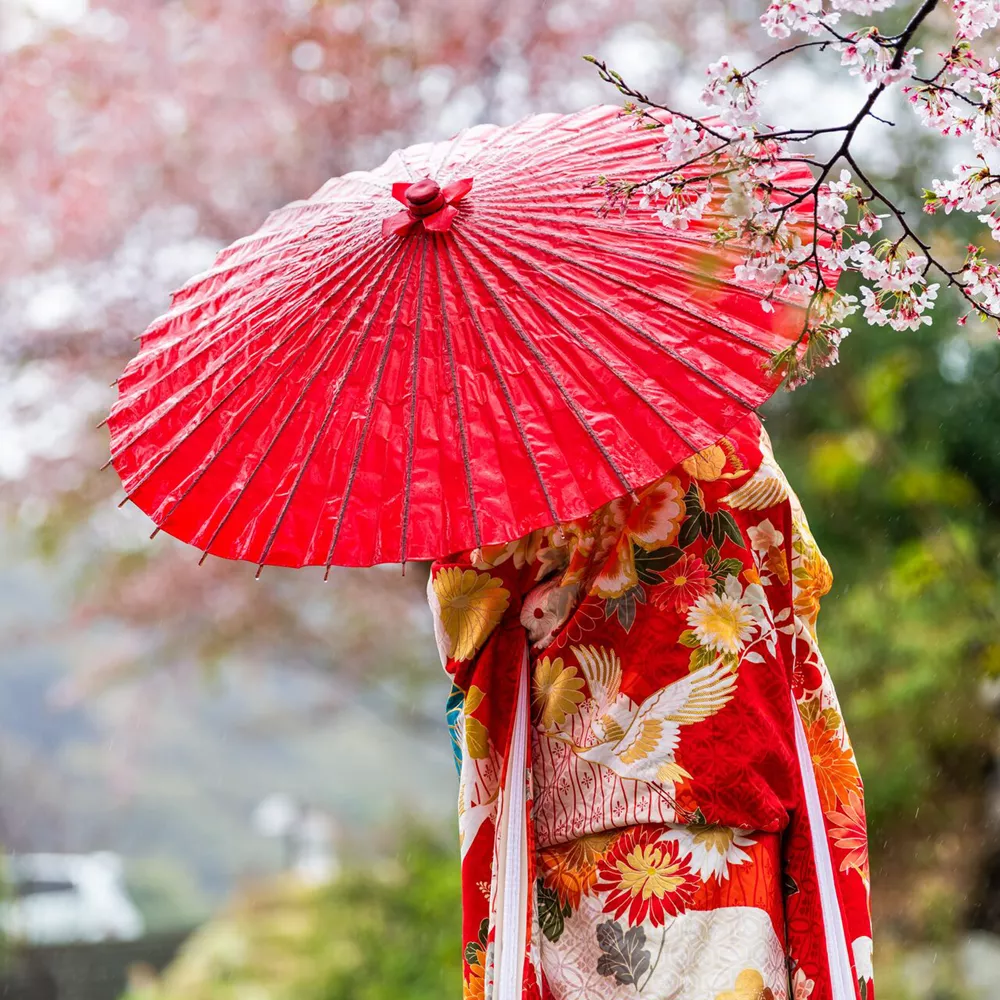
Japanese yen
Capital City
Good morning
Ohayōgozaimasu
Good evening
"Japan is one of the most captivating places on earth, where you can go from Tokyo's flashy streets to the snowy peak of Mount Fuji or a traditional ryokan in a day."
Travel Director
Admire the snow-capped Mount Fuji
See the towering peak of Mount Fuji, the tallest mountain in Japan and a UNESCO-listed site. We’ll take you up to the 5th station of Mount Fuji, a spectacular vantage point at 7,545 feet, before taking a ride on the Kachikachiyama Ropeway with views of Mount Fuji and Lake Kawaguchi.
Take a high-speed bullet train to Kyoto
Board the high-speed bullet train to Kyoto, the former capital of Japan and the ancient epicentre of Japanese culture. After whizzing through the country, you’ll meet the locals at a traditional ryokan and learn about traditional Japanese customs, then explore the Gion District and glittering Kinkakuji Temple, the symbol of Kyoto.
Experience a traditional Japanese Tea Ceremony
We’ll introduce you to a professional Tea Master who has spent many years learning the craft of the tea ceremony. You’ll learn about the history of Japanese tea making, and watch how the matcha is prepared with a bamboo whisk. You’ll even have a go at making (and tasting) your own tea.
Admire Osaka from the Floating Garden Observatory
The Floating Garden Observatory is an open-air viewing platform, stretching between the two towers of the Umeda Sky Building. We’ll take you to the top of the 567-foot buildings for panoramic views over Osaka, including the city’s dazzling rivers, bridges and soaring skyscrapers.
Wander through Ameyoko Street Market
With nearly 200 shops selling everything from fresh fish and spices to clothing and bags, you can spend hours roaming through Ameyoko Street Market. Located in Tokyo along the Yamanote Line tracks, it was once a black market selling American goods and sweets after WWII, when sugar was hard to find.
Our top 5 things to do in Japan
Our Japan tours take you from the dizzying heights of Mount Fuji and the bustle of the Ameyoko Market, to the tranquility of a Japanese tea ceremony.
Tokyo National Museum
The largest and oldest museum in Japan, Tokyo National Museum holds one of the world’s best collections of art and archaeological artefacts from Asia. There are over 110,000 items, including 87 National Treasures of Japan, and you can find everything from art along the Silk Road to medieval Japanese art.
Kotokuin Temple
Located in the city of Kamakuru, the Kotokuin Temple is a Japanese Buddhist temple of the Jodo sect. It’s home to the ‘Great Buddha’ or ‘Daibutsu’, a 37-foot bronze statue of Amida Buddha, constructed in 1252. The towering statue is a National Treasure and one of the most iconic sights in Japan.

Sensoji Buddhist Temple
One of the most famous temples in Japan, the Sensoji Buddhist Temple is the oldest Buddhist temple in Tokyo. It was originally built in 628 but was rebuilt after being destroyed in WWII. Today, you’ll find a beautiful five-storey pagoda, woven with incense and crimson eaves.
Best museums in Japan
A Japan tour package with Trafalgar takes you through the country’s top museums, from one of the world’s best collections of Asian art, to the ornate temples of Tokyo.
Although sushi is now a popular dish around the world, you’ve never really tried it until you’ve eaten the best in Japan. Our Local Specialists will help you navigate the endless varieties of this iconic dish, from raw vegetables to fresh fish wrapped in rice and seaweed.
Hida beef comes from a Japanese breed of black-haired cattle raised in the fresh air and pure water of Gifu Prefecture. Hailed as the best beef in Japan, we’ll take you to the top restaurants to try one of the beautifully tender and marbled Hida beef steaks.
A beloved dish found all over the country, ramen is a delicious Japanese noodle soup. Each region has a different variation and it usually involves a tasty pork or chicken broth, seasoned with plenty of rich flavors like miso, soy sauce and spring onions.
Best food in Japan
A Japan group tour with Trafalgar will have you indulging in the country’s fantastic cuisine, from fresh sushi to piping hot ramen.
What to pack for Japan

Adaptor plug
In Japan, the standard voltage is 100 V and the power plugs and sockets are of type A and B. The standard frequency is 50 / 60 Hz.
Comfortable sandals
Japanese culture requires you to take off your shoes when entering traditional restaurants, temples and ryokans. Bring a comfortable pair of sandals so you can easily slip them off all day.
Japanese phrasebook
Learning a few Japanese phrases will help you connect with the friendly Japanese locals, and offers the chance for some rewarding interactions.
Most shops and restaurants in Japan primarily accept cash, so it’s best to come prepared with some Japanese yen for your trip.
Versatile clothing
Japan’s weather ranges hot and humid to freezing cold, with mild springs in between. Pack versatile layers to be prepared for all conditions on your Japan holiday.
Our Asia destinations
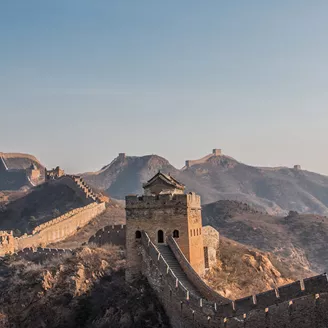
Other worldwide regions we visit
Africa the Middle East
Australia and New Zealand
North and Central America
South America
Get your free brochure
Find your next escape with the world's leading travel brand
Request A Brochure
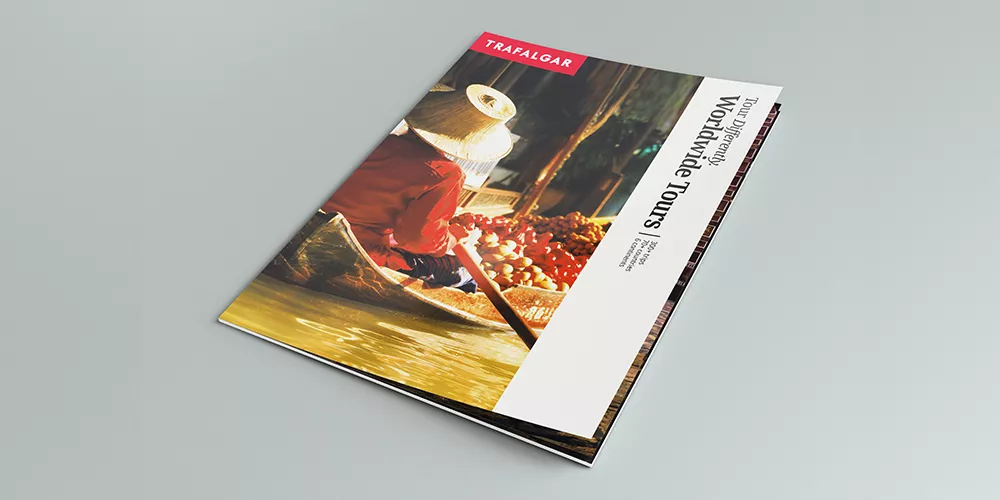
Award winning tours
Every year, we're proud to win some of the most prestigious travel accolades around the world - from the Travel Globes to the Agent's Choice Awards
Search Our Tours

Help & Info
WE MAKE TRAVEL MATTER®
Unedited Reviews
Our Destination Management Companies
Frequently Asked Questions
Travel Updates
Media & Press Room
Do Not Sell or Share My Personal Information
Travel Planning
Get Your Free Brochure
Travel Insurance
Booking Conditions
Trip Deposit Level
Recommendations
Trafalgar Tours Limited is a proud member of The Travel Corporation family of companies.
#SimplyTrafalgar
Travel House, Rue du Manoir St Peter Port, Guernsey, GY1 2JH
Selected Region
United States
United Kingdom
New Zealand
South Africa
Copyright 2024 Trafalgar. All rights reserved.
Terms and Conditions
Privacy Policy
Cookie Policy
Our online booking system is temporarily unable to accept payments. If you would like to book a tour or make a payment for a reserved tour, please call our office on: 020 7223 9485 .
- Cultural Tours
Japan - Historical and Contemporary

About the tour
Travel with Jason James OBE, the Director General of the Daiwa Anglo-Japanese Foundation, on a tour through Japan's long history. The itinerary follows Japanese history from the earliest historical records and continues via the shoguns, the arrival of the black ships, the Meiji Restoration and the opening of Japan, to the modern day.
The tour includes a range of specialist visits and experiences in Osaka, Kyoto, Nara, Hakone, the Izu Peninsula and Tokyo, which are illustrated by short talks throughout the tour.
Options include visiting a traditional onsen and walking the Philosopher’s Path in Kyoto.
Our online booking system is temporarily unable to accept payments. If you would like to book this tour please call our office on: 020 7223 9485 .
Your tour leader

Jason James
Jason James OBE is Director General of the Daiwa Anglo-Japanese Foundation. Having been fascinated by Japan on a choir tour at the age of 13, he chose to read Japanese Studies at King’s College, Cambridge, where he was a double scholar (academic and choral), graduating with a “starred first” (only the third time this accolade had ever been awarded by Cambridge’s Japanese Department) in 1987. Subsequently he worked in the financial industry, mostly specialising in Japanese equities, becoming Head of Research in the Tokyo office of HSBC Securities, and eventually Head of Global Equity Strategy at HSBC in London. From 2007-2011 Jason was Director of the British Council in Japan, during which time he also served as Chair of the European Union National Institutes of Culture Japan cluster, a Board Member of the Japan-British Society, and a Board Member of United World Colleges Japan. In London, in addition to his day job he was a Trustee of the Japan Society for six years, and a member of the Japan Season of Culture Action Committee. Jason is currently a member of the UK-Japan 21 st Century Group and a Governor of King's College School, Cambridge.
Jason’s interest in Japan is broad, covering the economy, financial markets and tax, as well as Japanese literature, art and history, and the relationship between the UK and Japan. Publications range from ' The Political Economy of Japanese Financial Markets' (co-author, Macmillan 1999), to ' Edmund Blunden and Japan' (Asiatic Society, 2010).
Jason received an OBE for services to UK/Japan relations in The King’s Birthday Honours 2023.
Need more information?
- Tel: 020 7223 5618
- Mon-Fri: 9am to 5pm
Itinerary at a glance
- Day 1: Osaka (Sun, 3 Nov) Arrive and transfer to the hotel. Welcome dinner at a restaurant with drinks.
- Day 2: Osaka (Mon, 4 Nov) Travel to Mount Koya to visit Okunoin Temple, one of the most sacred places in Japan. Visit the cemetery containing important Japanese people through history and see some of the 100 temples on the mountain. Learn about the powerful 12th century samurai warrior Taira clan and hear a short talk by Jason James: “ Capitals, culture and conflict .” Okonomiyaki dinner in Dotombori.
- Day 3: Osaka / Kyoto (Tues, 5 Nov) T ransfer to Yoshino, visit Kinpusen-ji Temple and walk up to the site of the Imperial Villa of Go-Daigo and the other Southern Court Emperors. Lunch at a local restaurant before visiting Nara, Japan’s 8 th Century capital. Visit Todai-ji, one of the Seven Great Temples, which contains the world’s largest bronze Buddha. Visit the important Shinto shrine of Kasuga Taisha before continuing to Kyoto. Talk: ‘Kyoto art, culture and the imperial city. Check into the hotel.
- Day 4: Kyoto (Wed, 6 Nov) Visit beautiful sixteenth-century Nijo Castle with its moat, huge stone walls, stunning gardens and rich art collection. Visit the Zen Golden Temple, whose top two floors are completely covered in gold leaf, and explore the famous geisha district of Gion. At leisure or option of walking the Philosopher’s Path. Shabu shabu dinner.
- Day 5: Kyoto (Thurs, 7 Nov ) Visit Byodo-in Temple in Uji. Travel to Fushimi Inari, famous for its thousands of vermillion torii gates, which straddle a network of trails. Take the Tofuku-ji Temple walk, visit Hojo rock garden and Tsutenkyo Bridge and gardens. Dinner at Tsuki No Kurabito with sake tastings.
- Day 6: Kyoto / Mishima (Fri, 8 Nov) Transfer to Sekigahara for a tour of the site of the Battle of Sekigahara of 1600. Continue to Inuyama Castle for a talk on Oda Nobunaga and Japanese unification, then take the bullet train from Nagoya to Mishima. Transfer to Fujisan Mishima Tokyu Hotel. Talk: “ Barbarians at the gate.” Dinner at local restaurant.
- Day 7: Mishima / Hakone / Mishima (Sat, 9 Nov) Visit Shimoda, a pleasant coastal city significant for being one of the first ports opened to foreign vessels, and Ryosenji, where there is a small museum to Commodore Perry. View the Mikomoto Lighthouse. Return to the hotel via the Nirayama Reverberatory Furnaces, a well-preserved iron smelting facility built in 1857 at the start of Japan’s industrial revolution.Option for onsen at hotel. Dinner at a local restaurant.
- Day 8: Mishima / Shimoda / Kamakura / Tokyo (Sun,10 Nov) Take a coach to the old Tokaido, the centuries-old route linking Tokyo with the former capital, Kyoto, and walk along its Cedar Avenue. Continue to Hakone and visit the superb Okada Museum of Art. Drive to Kamakura and see the great bronze Buddha, which was cast in 1252. Learn about Minamoto Yoritomo, the first shogun to effectively rule Japan. Drive to Tokyo and check into Mitsui Garden Ginza Gochome. Talk: “ Edo – early Tokyo. ” At leisure.
- Day 9: Tokyo (Mon, 11 Nov) Visit Ueno Park, one of Japan's oldest, surrounded by galleries and museums. In Yokohama, learn of the Namamugi Incident and the 1863 Anglo-Satsuma War. See Yokohama Foreign Cemetery and British House. Talk: “ Making modern Japan” before fresh fish izakaya dinner.
- Day 10: Tokyo (Tues , 12 No v) Take part in an art and architecture tour visiting the fashionable Harajuku area and see the intricate woodblock prints at the Ota Ukiyoe Woodblock Print Museum. Continue to the Nezu Museum to see its collection of Japanese and Asian pre-modern art and exquisite garden. Farewell Yakiniku barbecue dinner with views of Tokyo Bay.
- Day 11: Tokyo (Wed, 13 Nov) Depart hotel after breakfast.
The cost of the tour is £3,980 per person sharing. The cost of the tour with a room to yourself is £4,770. (Excluding international flights and transfers).
Nakasendo Way
11 Days, 10 Nights
Activity Level
Start / Finish
Kyoto / Tokyo
Technical Level
A moderate walking tour along an ancient thoroughfare through central Japan.
Walk Japan's pioneering walking tour of Japan. An excellent guided introduction to Japan while strolling along an historical road from Kyoto to Tokyo; great walking and hiking through rural and mountainous countryside trails; traditional and modern inns, hearty farmhouse cuisine.
March - June & September - November.
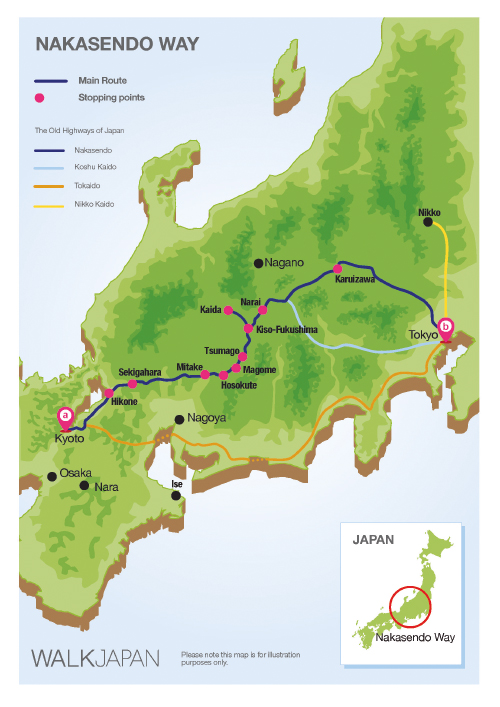
Day 1 Kyoto
Day 2 kyoto – hikone – sekigahara, day 3 sekigahara – mitake – hosokute, day 4 hosokute – ena, day 5 ena – magome, day 6 magome – tsumago, day 7 tsumago – kiso-fukushima, day 8 kiso-fukushima – kaida plateau, day 9 kaida plateau – narai – karuizawa, day 10 karuizawa – tokyo, day 11 tokyo, related tours, tokaido trail.
7 days | Year-round Activity Level : 3
Self-Guided
Self-Guided Nakasendo Wayfarer
7 days | March - June & September - November Activity Level : 3
Nakasendo Way: The Kiso Road
5 days | Year-round Activity Level : 3
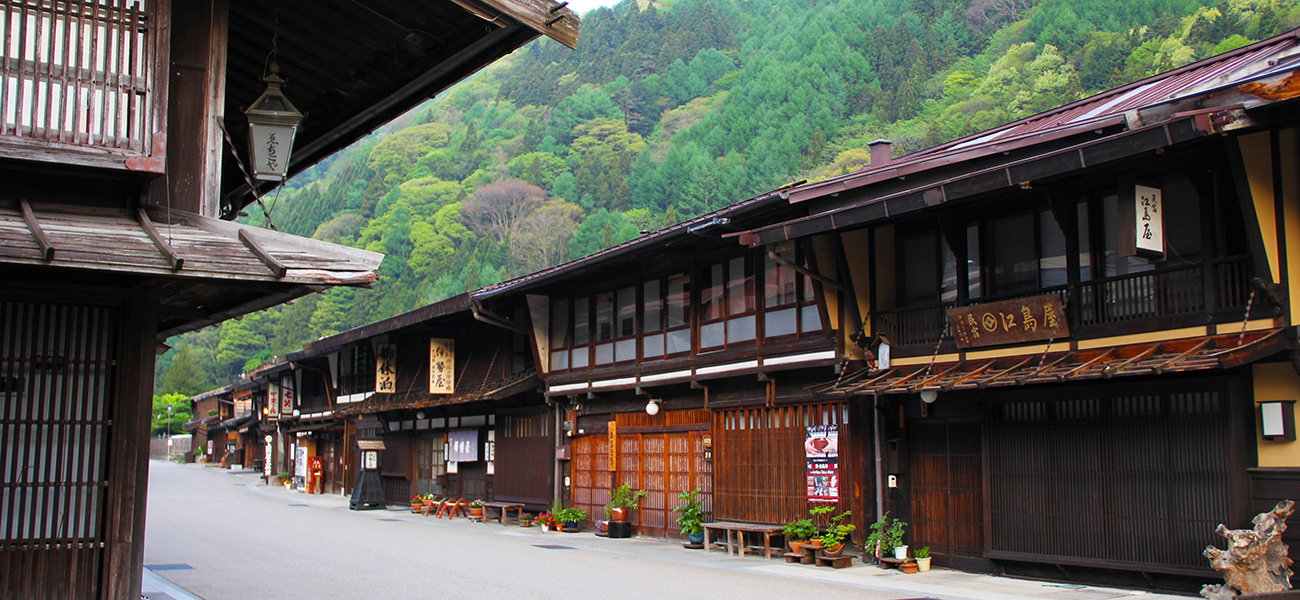
Please sign up here if you wish to receive our newsletter.
Walk Japan Ltd. will use the information you provide on this form to be in touch with you and to provide updates and marketing. Please let us know all the ways you would like to hear from us:
You can change your mind at any time by clicking the unsubscribe link in the footer of any email you receive from us, or by contacting us at [email protected]. We will treat your information with respect. For more information about our privacy practices please visit our website. By clicking below, you agree that we may process your information in accordance with these terms.
We use MailChimp as our marketing platform. By clicking below to subscribe, you acknowledge that your information will be transferred to MailChimp for processing. Learn more about MailChimp's privacy practices here .
Quick Links
- For Schools
- Destinations
- Japan Information
- Latest News
- Community Project & Sustainability
- Booking Conditions
- Privacy & Cookies Policy Statement
- Personal Information Collection Statement
Follow Walk Japan
© 1992-2024 Walk Japan Limited
Travel Agents License No. 354159
Website Design by Walk Japan and Development by Macareux Digital, Inc.
- Travel Planning Guide
The Best Historical Tours in Japan
Delve into japan's history: explore iconic sites and hidden gems.
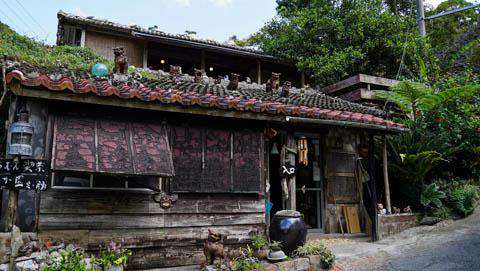
Are you ready to satisfy your wanderlust and ignite your curiosity for the past? These top rated historical and cultural tours to Japan offer a unique blend of exploration, education, and relaxation. With meticulous analysis of a wide array of tours based on service, price, comfort, guest ratings, and activities, we've handpicked the most captivating experiences to help you plan your next trip. From immersive guided tours to off-the-beaten-path excursions, these fantastic and well-planned guided tours are designed to provide a perfect balance between adventure and relaxation. Get ready to embark on a journey that will leave you with lifelong memories and a deeper appreciation for the heritage that has shaped our world.
- Japan in a Week (8 Days) 8 Days, $1895.00
- Japan One Life Adventures - 14 Days 14 Days, $2894.50
- Japan One Life Adventures - 10 Days 10 Days, $2086.54
What are the historical tour options in Japan?
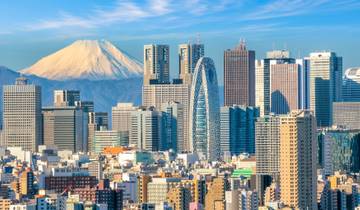
Here are the important factors:
- 29 trip options analyzed
- $352 average price per day (USD)
- 6 to 16 days in length
- 4.55 of 5 average rating
- 24 people or less on average
Curious about the diverse range of historical tours? Prepare to be amazed by the array of options available to suit every traveler's preferences. It comes as no surprise that visitors adore these tours, given their exceptional average guest rating of 4.55 out of 5 stars. When it comes to group sizes, the average maximum capacity stands at 24 people, allowing for a comfortable and sociable experience. The shortest tour is 6 days, while the longest is 16 days. When it comes to physical activity , tour options are organized as easy and moderate, with a majority being easy tours. For transportation , you'll find tours classified as coach / bus and train & rail, with most of them being coach / bus. With a comprehensive analysis encompassing 29 historical tours, you can rest assured that Japan has something tailored to your interests and preferences, promising an unforgettable experience for all.
(All tour prices are in US Dollars before taxes, and come from a base price that is reported by TourRadar. Peak season prices can vary significantly, particularly in destinations where seasonal travel fluctuates dramatically.)
So, let's get to it and see...
The 10 Best Historical Tours in Japan
Japan in a week (8 days).
- On Sale: 10% Off See Prices
- Great Value: the daily price is lower than average for historical tours.
- High Quality: guest ratings are higher than average.
Check out this incredible voyage that has received a 5 out of 5 rating from previous guests. With a duration of 8 days, this journey ensures an intimate group size of 50 people, and is good for travelers aged 18 to 35 years old. Tokyo marks the starting point, while Osaka stands as the final stop on your incredible journey. This fantastic option, organized by Contiki , presents an unbeatable value at just $213 per day. It's currently on a special discounted offer.
- In-depth Cultural
Japan One Life Adventures - 14 Days
Spanning over 14 days, this trip has a maximum size of 22 individuals. Welcoming travelers aged 18 to 45 years old, it is organized by One Life Adventures , a very popular company with plenty of great reviews. Immerse yourself in a travel experience that includes 9 destinations, featuring Kyoto, Osaka, Nara, and Koya-san. Beginning in beautiful Tokyo, you'll have a terrific journey that ends in Hiroshima. Available at an unbeatable price of only $186 per day, this option also has a rating of 4.9 out of 5 stars from previous guests.
Japan One Life Adventures - 10 Days
Here's your chance to take off on an exceptional voyage that has garnered a 4.8 out of 5 rating. With a duration of 10 days, this jouney will have 22 participants, and it warmly welcomes travelers aged 18 to 45 years old. Expertly organized by One Life Adventures , this amazing trip is an incredible value at just $188 per day.
Japan Adventure
This memorable voyage is offered by INTRO Travel which has received plenty of positive reviews. The trip itself has a guest rating of 4.9 out of 5 stars, and is priced affordably at $196 per day. Traverse through 7 enchanting destinations, with Osaka, Koya-san, Nagano, and Hakone among the must-see stops along the route. Tokyo marks the starting point, while Kyoto stands as the final stop on your incredible journey. The maximum group size is 16 people, welcoming travelers aged 18 to 39 years old.
Highlights of Japan - 7 Days
Set off on an extraordinary journey that has been awarded a 4.2 out of 5 stars by previous guests. You'll love the emphasis on local culture and family-friendly activities, too. With a duration of 7 days, this voyage offers an intimate group setting, accommodating 40 individuals, while extending a warm welcome to travelers aged 2 or older. This trip visits 5 destinations, including Fuji, Hamamatsu, and Osaka along the way. Beginning in beautiful Tokyo, you'll have a terrific journey that ends in Osaka. Brought to you by Tomato Travel , this exceptional deal is an incredible steal at a mere $202 per day.
- Train & Rail
Japan: Castles & Cuisine
- On Sale: 20% Off See Prices
With this option you can experience an unparalleled journey for 6 unforgettable days. It ensures an intimate group setting with 16 participants at most. Experience a trip that takes you to 4 remarkable destinations, including Hiroshima and Miyajima Island. Kyoto will mark the start of your journey, while Osaka will serve as its final destination. G Adventures , the organizer of this journey, extends a warm invitation to guests travelers aged 18 to 39 years old. This extraordinary opportunity offers exceptional value at only $200 per day. Act quickly to seize the current limited-time sale and reserve your spot now.
- Food & Culinary
Highlights of Japan
This fantastic journey has a rating of 4.2 out of 5 stars. Explore 11 incredible locations on this trip, including Nara, Himeji, Okayama, and Hiroshima. Your adventure starts and ends in Tokyo. And since the priority is on local culture and family-friendly activities, this tour is a great choice. Lasting 11 days, the maximum group size is 51 people, and it's good for travelers aged 10 to 90 years old. Organized by Expat Explore Travel , this is a great deal because it's only $237 per day.
- Coach / Bus
Beijing to Tokyo: The Great Wall & Mt Fuji
With a stellar 4.8 out of 5 rating, this extraordinary voyage, visiting China and Japan, is the perfect choice. Discover a journey that spans 9 destinations, with notable stops in Shanghai, Osaka, Koya-san, and Hiroshima. Beginning in beautiful Beijing, you'll have a terrific journey that ends in Tokyo. Spanning across 16 days, the voyage accommodates 15 individuals, and is suitable for travelers aged 12 to 90 years old. Offered by G Adventures , this remarkable voyage is priced at just $301 per day. Don't miss out on this incredible experience.
Japan Highlights 10D/9N
This exceptional trip offering by Bamba Travel has received a 4.8 out of 5 rating. On this 10-day journey you can unwind while also making new memories. This trip takes you on an adventure to 5 destinations, including Hakone, Kyoto, and Hiroshima. Begin and conclude your remarkable journey in the gorgeous destination of Tokyo. With a group size of 20 people, it's suitable for travelers aged 10 or older. This extraordinary adventure also revolves around local culture and family-friendly activities. This remarkable trip is priced at an unbeatable $303 per day.
Japan Backpacker Adventure 13D/12N
Check out this voyage that has received rave reviews, earning a stellar 5 out of 5 rating. With 6 destinations to explore, you'll get the chance to see Kamakura, Hakone, Kyoto, and Hiroshima, and more. Tokyo marks the starting point, while Kyoto stands as the final stop on your incredible journey. Spanning across 13 unforgettable days, this voyage offers an intimate group experience with 20 participants, and it's great for travelers aged 18 to 55 years old. Brought to you by the renowned Bamba Travel , this exceptional opportunity is priced at an incredible $272 per day - an unbeatable value.
See also The Best Family-Friendly Tours to Japan , The Best Hiking & Trekking Tours in Japan , The Best 10-Day Tours in Japan , The Best One Week (7-Day) Tours in Japan , The Best 2-Week Tours in Japan , The Best Bicycle Tours in Japan , Tours for Outdoor and Nature Lovers in Japan , The Best Christmas & New Years Tours in Japan , The Best Coach Bus Tours in Japan , The Best Adventure Tours to Japan , The Best Eco Tours in Japan , The Best Train & Rail Tours in Japan , The Best Sightseeing Tours in Japan , The Best Cultural Tours in Japan , The Best Food and Culinary Tours in Japan , The Best Romantic Tours for Couples in Japan , The Best Luxury Tours to Japan , The Best Budget Tours to Japan , The Best Tours for Seniors to Japan , The Best Contiki Tours to Japan , or The Best G Adventures Tours to Japan for more tour ideas. With so many options, there's a guided tour or vacation package for every type of traveler.
Also, if you're departing from a specific destination, see The Best One-Week (7-Day) Tours from Tokyo , The Best One-Week (7-Day) Tours from Fukuoka , The Best One-Week (7-Day) Tours from Osaka , The Best 10-Day Tours from Tokyo , The Best 2-Week Tours from Tokyo , The Best 2-Week Tours from Osaka , or The Best 2-Week Tours from Kyoto for more package tour options.
How much do historical tours in Japan cost?
Visitors will find a large range of terrific options for historical tours when planning a visit to Japan. The price of these specific trips can vary according to length, destinations, and travel style. The average price of historical tours in Japan based on data from 29 options is an affordable $352 per day. If you're interested in more information about tours here, see our guide to tour prices in Japan .
And for more information on Japan, see Japan Travel Costs and Japan Hotel Costs .
Subscribe to our Newsletter
By signing up for our email newsletter, you will receive occasional updates from us with sales and discounts from major travel companies , plus tips and advice from experienced budget travelers!
Budget Your Trip

Some of the links on this website are sponsored or affiliate links which help to financially support this site. By clicking the link and making a purchase, we may receive a small commission, but this does not affect the price of your purchase.
- Privacy / Terms of Use
- Activities, Day Trips, Things To Do, and Excursions
Japan Awaits

- Okinawa Island
- Multi-Day Tour
- Interesting
- Living In Japan
Modern Japanese History Tour
Explore recent Japanese military history on this 3-hour guided excursion in Tokyo. Experience the lives of everyday people and soldiers during World War II at Yushukan Shrine , learn about military practices like Kamikaze attacks from an expert guide, and stop by a shrine that commemorates Japan’s 2.5 million victims of war since 1869.
It has been over 70 years since the surrender of Japan, which ended the Second World War. The global war that lasted from 1939 to 1945, was the most widespread war in history, as it involved more than 100 million people from over 30 countries. Many lives were lost during the war, including the 129,000 to 226,000 fatalities that occurred due to the atomic bombings of Hiroshima and Nagasaki.
Tokyo suffered greatly from the war, especially with the B-29 air raids conducted in March 1945. They were regarded as the single most destructive bombing raid in human history, as most of central Tokyo was annihilated (with 1 million people made homeless and an estimated of 100,000 civilian deaths).
In this three-hour small group Modern History Tour, you’ll be guided by an English-speaking guide as you visit the historic landmarks with relics of WWII. At 9 AM, meet with your tour guide at Kudanshita Station (designated meet-up spot will be provided after booking).
Guests will pay a visit to Yasukuni Shrine, which commemorates 2.5 million of Japan’s war dead since 1869. Learn about the history and controversy that surrounds the shrine before heading to Yushukan, the military and war museum dedicated to the souls of soldiers who died fighting for their country.
In this tour, guests will learn how the Japanese commemorate and pay their respects to those who have perished from war, the issues that civilians faced during WWII such as starvation, how Japanese soldiers felt and behaved during the war, learn why kamikaze (also known as tokotai) was so prevalent and how the soldiers told their family members before their inevitable fates.
Highlights:
- Spend a few hours exploring Japan’s modern history of war on a guided tour
- Learn about Japan’s 2.5 million war dead and Kamikaze attacks from an expert
- Visit landmark sites such as the Showa-kan Museum and Yushukan Shrine
- Get a different perspective on Japan with this specialized experience
Availability: Tuesdays to Sundays from 9 AM to 12 PM
Location: Kudanshita Station (designated meet-up spot will be provided after booking)
- 2 or more people: 11,000 JPY per person
- 1 person only: 22,000 JPY per person
- 2 or more people: 13,500 JPY per person
- 1 person only: 27,000 JPY per person
- 4-Hour Private Tokyo Tour (Add-on):
The 4-Hour Private Tokyo Tour will include an English-speaking guide. This tour will be conducted after the Modern History Tour, from 12 PM to 4 PM. Public transportation costs are included. Admission fee or other optional activity fees for guests and tour guides are not included.
Included:
- English speaking guide
- Photo opportunities
- Food and drinks
- Souvenirs (available for purchase)
- Hotel pickup and drop-off
Additional Information
As the shrines in Japan are sacred places, we ask that all guests dress appropriately (no short skirts or shorts, or articles of clothing with an excessive amount of skin exposure). We also recommend smart casual attire with comfortable shoes, as there will be a moderate amount of walking.
Age Requirement
There is no age requirement, but a reservation must be made for all guests, and the cost is the same for all ages.
All bookings are payable via Stripe (Booking Checkout) or Flywire. Confirmations regarding your booking will be sent at least 10 days before your activity date.
Cancellation Policy
Standard Cancellation Policy:
- We will charge a cancellation fee of 100% if booking is cancelled 5 days or less before event
- We will charge a cancellation fee of 50% if booking is cancelled 7 days or less before event
- We will charge a cancellation fee of 25% if booking is cancelled 10 days or less before event ays before your activity date.
There is a non-refundable 3% service fee for all bookings. Refunds (that are not subject to a cancellation fee) will include the ticket price less the 3% service fees. If an event is cancelled or postponed by Japan Awaits, refunds will be for the entire purchase—that includes the ticket price and the service fees.
What is the purpose of this tour?
In this tour, guests will learn how the Japanese people commemorate and pay their respects to those who have perished from war, the issues that civilians faced during WWII such as starvation, how Japanese soldiers felt and behaved during the war, learn why kamikaze (also known as tokotai) was so prevalent and how the soldiers told their family members before their inevitable fates.
Will this be a sensitive topic for some people?
While the purpose of this tour is to educate and inform about Modern Japanese history (from over 70 years ago until recent times), it may still be a sensitive topic to some people. We really hope that everyone who comes will keep an open mind and will not put our tour guides in a difficult situation; if the tour guide may feel threatened at any point, please note that the tour may have to end and the tour guide may contact local law enforcement if necessary.
How far in advance should I book?
Preparing a customized tour requires some time, especially if reservations for restaurants or other venues are required. We recommend making a reservation as early as possible. Ideally, it should be 3 months before your travel date, or 1 month before the travel date at the very least. For Custom Tour bookings that are requested with less than 7 days before the travel date, we may not be able to arrange your custom tour in time so your booking request may be cancelled and you will receive a full refund.
Why am I charged a service fee if I make a cancellation after you started planning the trip?
Organizing and planning a trip requires a lot of time and if we have made reservations on your behalf, it may be very challenging to cancel some booking requests. Once we receive your booking and your answers from the Custom Tour form, we will begin putting together your Itinerary Sheet and will start arranging your tour guide, buying tickets, making reservations at venues for your tour, etc. If you cancel the tour any time after we have sent you the custom Itinerary Sheet, the service fee of 15% of your total tour cost will be nonrefundable
Booking Request
Name (First, Last)
Date of Event
Starting time Wednesday 9 AM to 12 PM Saturday 9 AM to 12 PM
Number of People 2 people 3 people 4 people 5 people 6 people 7 people 8 people 9 people 10 or more people
Package Standard tour Private tour Standard tour with add-on Yanaka Shrine Private tour with add-on Yanaka Shrine Standard tour with add-on 4 Hour Tokyo Tour Private tour with add-on 4 Hour Tokyo Tour

Other Experiences
Cities All Multi-Day Tours Tokyo Kyoto Fukuoka Hakone Hiroshima Himeji Kagoshima Kamakura Kanazawa Kumamoto Kobe Matsumoto Nagasaki Nagano Nagoya Niigata Nikko Okinawa Island Osaka Sapporo Takayama Yokohama Categories All Attractions & Museums Classes & Workshops Cultural & History Day Trips Food & Nightlife Family Friendly Geisha Group Tours Language Multi-Day Tours Outdoor & Sports Photography Private & Custom Seasonal Self-Guided Sightseeing Special Events

Japan Archaeological Cruises
- Start Date Select Month April 2024 May 2024 June 2024 July 2024 August 2024 September 2024 October 2024 November 2024 December 2024 January 2025 February 2025 March 2025 April 2025 May 2025 June 2025 July 2025 August 2025 September 2025 October 2025 November 2025 December 2025 January 2026 February 2026 March 2026 April 2026 OR, More specific start
- River Cruises
- Wildlife & Safari Exploration
- Archaeological Site Visits
- Local Market Visits
- Small Ship Cruises
- Village Visits
- Whale Watching
- Wildlife Viewing
- Heritage Adventurer
- Le Jacques Cartier
- National Geographic Resolution
- Scenic Eclipse II
Treasures of Japan by Sea – with Smithsonian Journeys
- Discover Kobe's history
- Explore Takamatsu's Ritsurin Garden
- Visit Hiroshima's Peace Memorial
- Delve into Sakaiminato's richness
Secular Treasures in the Land of the Rising Sun
- Explore Hiroshima's Peace Memorial
- Wander through Hagi's streets
- Discover Busan's ancient districts
- Delight in Kochi's lush landscapes
Japan, Natural Archipelago and Secular Heritage
- Explore Tomonoura's landscapes
- Discover Moji's Meiji-era streets
- Unveil Busan's contrasting charms
- Experience Nagasaki's ambiance
Japanese Ancestral Traditions and Legendary Shrines
- Discover Himeji’s UNESCO castle
- Sail to Kyushu to explore Toba
- Explore the Miyajima Island
- Experience the contrasts of Busan
- Explore cliffs and rock formations
- Succumb to the charms of Amakusa
- Discover the vibrant city, Busan
- Unveil Moji's captivating panoramas
Expedition in the Seto Inland Sea
- Visit temples of Onimichi
- Explore legendary Hari
- Sail to Japan’s oldest sea route
- Experience Nagasaki's heritage
Coastal Japan: Imperial Dynasties and Modern Culture
- Enjoy castles and samurai district
- Discover ancient ruins of Gyeongju
- Visit Matsue's art museum
- See Naoshima, the art-filled island
- Tour three Japanese gardens
A Journey from Nome to Tokyo: Ring of Fire to Ainu Culture
- See Pribilof Islands
- Experience untamed Baby Islands
- Hunt with the Aleuts
- See Pacific Ring of Fire's wildlife
- Tour Shitsugen National Park
- See mirror-like lakes
Asia Travel Guide
- All Asia Trips
- Asia Cruise: When to Go?
- Best Times to Visit Thailand
- Best time to Visit Cambodia
- Asia Luxury Tours
- Mekong River
Favorite Asia All Trips
- Great Wall, Dynasties, & Rivers
- Beautiful Beijing & the Wall
- Best of Thailand
- Vietnam Adventure
- Borneo Hiking & Wildlife Adventure
- Highlights of Cambodia
- Essence of China
Top Japan Travel Destinations
Japan trips by departure date.
- 2024 Japan trips (7)
- 2025 Japan trips (13)
- April 2025 (7)
Top Experiences in Japan
- Japan Cruises (19)
- Japan Cultural (6)
- Japan Luxury (3)
Japan Trips by Duration
- 8 day trips (3)
- 9 day trips (4)
- 12 day trips (3)
Japan Trips by Activity
- Japan small ship cruises (14)
- Japan local market visits (10)
- Japan village visits (9)
- Japan archaeological site visits (8)
- Japan wildlife viewing (4)
Why Travel With Adventure Life
Recognized by.

For a limited time, book your 2020, 2021 & 2022 group tour packages with no deposit required!!!

- Custom Groups Custom Groups Overview Student Groups MICE Special Interest Groups
- About Japan About Japan Destinations Attractions Must See & Do
- About Us About Us Contact us Testimonials Terms & Conditions Travel Agent Services Disclaimer Site Map
- News Press Releases Blog Media
- Your Trip Get Started How to make a reservation Travel Tip FAQs Inquiries
Last Name *
- About Japan
Contact our Travel Consultant
1-855-325-2726 (us/canada), 1-909-988-8885 (international), mon. - fri., 8:30am - 5:30pm (pst), (except national holidays), [email protected].
The Jomon Period (13,000 BC to 300 BC) fostered human development, which were gatherers, fishers, and hunters inhabiting the Japanese islands. This period is named after the pottery during this era, which had a cord-pattern (Jomon) design. In the Yayoi Period (300 BC to 300 AD), rice cultivation and the use of iron and bronze was introduced to Japan. With the introduction of agriculture and modern ideas, social classes began to evolve. A Chinese historical document noted in the third century that a powerful chieftain called Himiko ruled Yamatai in Japan. During the Kofun Period (300 - 538), the emergence of a highly aristocratic society with militaristic rulers developed. Large mounded tombs (kofun) were built for the political elite, hence this period’s name. An imperial family established Japan’s first unified state in the fourth century, known as the Yamato clan. Yamato Japan extended from Kyushu to the Kinai plain, in which an emperor ruled. However, the Soga clan soon took over the political power resulting in a system where most emperors remained only as a symbol of the state. The Asuka Period (538 - 710) marked the initiation of Buddhism in Japan. Up until that era, Japan’s religion was based on the Shinto religion, which is still practiced today. However, fundamental changes during this period were not only religious beliefs, but other important foreign concepts and practices that had a profound impact on Japanese society. Prince Shotoku wrote the Constitution of Seventeen Principles which consisted of moral and political principles. It is also said that he played an important role in promoting Chinese beliefs. The Taika Reform was also established, which involved a government and administration system based after the Chinese model. The Nara Period (710 - 794) highlights the establishment of the first permanent capital at Nara. The Japanese capital was moved from Fujiwara-kyo to Heijokyo (modern Nara) in 710. It was during this era that the Great Buddha Daibutsu was built at the Todaiji temple in Nara. Buddhist art and architecture flourished, and Buddhism became a prevalent religion. Literary works such as Kojiki and Nihon Shoki (histories of Japan) were compiled. An imperial anthology of poetry called Man’yoshu was also celebrated.

In the Heian Period (794 - 1185), there was a great flowering of classical Japanese culture. The period is named after the capital that moved to Heian-kyo (now Kyoto), heian meaning “peace and tranquility”. The Fujiwara family gained control of the political scene for several centuries, ruling on behalf of the emperors. After the clan’s power reached its peak in 1016, the fall embarked when the ability of the Fujiwara leaders began to decline and public order could not be maintained. This lead to land owners hiring samurai for protection, further resulting in a much more influential military class. In the 12th century, two military families called the Minamoto (or Genji) and Taira (or Heike) gained much power. The rival clans fought a deciding war for supremacy, the Gempei War, lasting from 1180 to 1185. The Minamoto defeated the Taira control, and Minamoto Yoritomo succeeded as the leader of Japan. He was appointed shogun and established a new government in Kamakura. The Kamakura Period (1192 - 1333) began with shogun Minamoto Yoritomo establishing a new feudal government called Kamakura Bakufu. It was simpler and more efficient than the one in Kyoto under Japanese conditions. After Yoritomo’s death in 1199, a feud for power began between the Bakufu of Kamakura and the Imperial court in Kyoto. When the Kamakura defeated the Imperial army during the Jokyu disturbance (1221), the Hojo regents achieved complete control over Japan. The Hojo clan maintained tight control and brought several decades of peace and economic expansion until an outside power threatened Japan. There were Mongolian invasion attempts in 1274 and 1281 which the Honjo family successfully defeated. However, when warriors were not properly rewarded for their efforts, they turned their loyalty away from the Kamakura government. In turn, imperial power was restored and the Kamakura Bakufu was overthrown by 1333. The beginning of the Muromachi Period (1333 - 1573) was dominated by a political standoff between Emperor Go-Daigo, who briefly restored imperial power and overthrew the Kamakura Bakufu, and former supporter Ashikaga Takauji. Ashikaga Takauji who had once fought for the emperor, challenged and succeeded in capturing Kyoto. Takauji appointed himself as shogun in 1338. The government buildings in Kyoto (from 1378) were located in the Muromachi district, giving the period its name. Shogun Ashikaga Yoshimitsu (1368 - 1408) established good trade relations with Ming China which lead to an improved economic change. As a result, there was a development of markets, several towns, and new social classes.

The Ashikaga shoguns and the government in Kyoto declined during the 15th and 16th centuries. New feudal lords, referred as daimyo, continuously fought each other to exert control over different parts of Japan. This occurred for several decades known as the Sengoku period, a complicated age of civil wars. By the 16th century, powerful warlords rivaled against one another to gain control over the entire country. One of them was Oda Nobunaga, who commenced the unification of Japan by capturing Kyoto in 1568 and overthrew the Muromachi bakufu in 1573. During the Azuchi-Momoyama Period (1573 - 1603), Oda Nobunaga continued eliminating his enemies after establishing himself in Kyoto. In 1575, Nobunaga defeated the Takeda clan in the battle of Nagashino. In 1582, General Akechi assassinated Nobunaga and seized his Azuchi castle. A general fighting for Nobunaga, Toyotomi Hideyoshi, quickly reacted and defeated Akechi while gaining control. Hideyoshi conquered the Northern provinces, Shikoku in 1583, and Kyushu in 1587. In 1590, Japan was finally reunited after defeating the Hojo family in Odawara. Hideyoshi’s massive castle, the Osaka castle, was built the same year. A command was issued by Hideyoshi to expel Christian missionaries. Franciscans entered the country anyways (1593) and Jesuits remained active. Hideyoshi intensified the persecution of Christian monasteries and executed 26 Franciscans as a warning. After uniting Japan, Hideyoshi made an unsuccessful attempt at conquering China. Hideyoshi stubbornly did not give up and failed yet again until 1598, the same year he died. A man named Tokugawa Ieyasu, a former partner of Hideyoshi and Nobunaga, succeeded Hideyoshi as the most powerful ruler of Japan. The Edo Period (1603 - 1867) began when Tokugawa Ieyasu was appointed shogun by the emperor and founded his government in Edo (now Tokyo). The Tokugawa shoguns ruled and maintained a secluded peace for over 250 years. In 1615, Ieyasu eliminated the Toyotomi clan and captured the Osaka castle. Peace prevailed throughout the Edo period as he and his successors no longer had any rivals. Poetry, music, Kabuki and bunraku (puppet theater), geisha, popular stories, a rich literature, and art were all among the culture that flourished during this era. By the end of the 18th century, external pressure became a profoundly important issue in Japan. Unsuccessfully, Russians first tried to develop trade contacts with Japan, followed by Europeans and Americans in the 19th century. Eventually, Commodore Perry forced the Tokugawa government to open international trade ports in 1854.

The Tokugawa government fell in 1867-68 due to heavy political pressure, and Emperor Meiji’s power was restored. The Meiji Period (1868 - 1912) was introduced when political authority shifted from the shogunate to the imperial court. When Emperor Meiji moved from Kyoto to Tokyo, it became the new capital. Japan among other subjugated Asian nations, were forced to sign treaties with the Western powers. Since these treaties admitted the West into one-sided economical advantages, Meiji Japan was determined to regain its independence from Europeans and Americans. The new government made drastic reforms aiming to state equality among the people of Japan. Specifically, boundaries between social classes of Tokugawa Japan were gradually broken and religious freedom was established. In 1889, Japan received its first European-style constitution. A parliament known as the Diet was established while the emperor held sovereignty over the army, navy, and executive and legislative power. In 1894, the Sino-Japanese War was a reaction due to a conflict of interest in Korea between China and Japan. Japan defeated China and received Taiwan. Although Russia, France, and Germany forced Japan to return other territories. The Russo-Japanese War in 1904-05 transpired because of a new conflict of interest in Korea and Manchuria, this time between Russia and Japan. The Japanese army was victorious, and furthermore, gained territory and international respect. Japan’s influence on Korea increased leading to its annexation in 1910. The war successes caused nationalism in Japan to grow, as well as confidence in other Asian countries. The era of the ruling clique of genro came to an end when Emperor Meiji died in 1912. During the Taisho period (1912 - 1926), political power was shifted from the genro to parliament and democratic parties. Japan joined the Allied powers during the First World War, playing a minor role in fighting German colonial forces in East Asia. At the Paris Peace Conference in 1919, Japan’s proposal of the “racial equality clause” was rejected by the United States, Britain, and Australia.

The Exclusion Act passed by the US Congress in 1924 was yet another factor that lead to the deteriorating relations preceding World War 2. Japan’s economic situation worsened after WW1 when the Great Kanto Earthquake of 1923 and the depression of 1929 hit. In the Early Showa Period (1926 - 1945) the military held almost complete authority over the government. Japan’s influence over Manchuria had been gradually increasing since the Russo-Japanese war in 1904-05. When Chinese nationalists challenged Japan’s position in Manchuria (in 1931), the Kwantung Army (Japan’s armed forces) occupied Manchuria. The second Sino-Japanese War broke out in 1937. The Japanese forces almost succeeded in occupying the whole coast of China. Although, the Chinese government never surrendered fully, and the war continued until 1945. Upon agreement with the French Vichy, Japan occupied French Indochina (Vietnam) and joined the Axis powers with Germany and Italy in 1940. The US and Great Britain reacted with an oil boycott, which further resulted in more conflict and Japan’s decision to go to war. In December of 1941, Japan attacked the Allied Powers at Pearl Harbor and other Pacific points, and was able to expand control over a large territory. The Allied forces slowly won back the territories occupied by Japan after the battle of Midway in 1942. Intensive air raids started over Japan in 1944. In 1945, Okinawa was invaded by US forces. The Allied Powers requested Japan in the Potsdam Declaration (July 27, 1945) to surrender, or destruction would continue. Even after the US forces dropped two atomic bombs in Hiroshima and Nagasaki (August 6 and 9), the military would not consider the terms. However, on August 14th, Emperor Showa decided to surrender unconditionally. The Postwar Showa period (1945 - 1989) marked the decades of Japan’s tremendous recovery and its rise to a global economic powerhouse second only to the United States, its former enemy and subsequent ally. “The Japanese Miracle” is the remarkable period of Japan following the decades after 1950, where the country rebuilt itself politically and economically. The Heisei period (1989 - present) is Japan’s current era. This era went immediately into effect after the death of Hirohito, the Showa Emperor, and his son Akihito succeeded the throne. The Heisei period was marked by a turbulent of politics (over 15 prime ministers within first two dozen years), a prolonged economic slowdown, and financial crises. In 1995, there was a deadly earthquake in Kobe. Another catastrophic earthquake and tsunami hit northeastern Honshu in 2011, which further lead to the Fukushima nuclear accident.

- Share full article
Advertisement
Supported by
This Japanese Museum Actually Keeps Time
The Timepiece Museum has about 120 clocks of all shapes and sizes on display, out of a total of about 800, with the oldest dating from the 1400s.

Text by Vivian Morelli
Photographs by James Whitlow Delano
Reporting from Matsumoto, Japan
There are a lot of reasons to visit Matsumoto, a city at the foot of the Japanese Alps in the central prefecture of Nagano.
Most visitors head there to see the 16th-century castle, one of the oldest in the country, or to bathe in the natural hot springs. But few, even within Japan’s large community of watch fans, know that Matsumoto also is home to the Timepiece Museum, a three-level bright and airy exhibition space that displays about 120 of its 800 clocks at any given time.
According to the website of the Japan Clock and Watch Association , the museum has “one of Japan’s richest collections of antique clocks in motion so that visitors can enjoy the movement of pendulums and the sound of bells.” (And you should hear the racket when the clocks chime the hour.)
Indeed, what sets the museum apart is that many of its clocks work. “It’s quite rare for clock museums around the world,” said Shun Kobayashi, the museum’s curator.
The oldest clock in the collection is an hourglass dating from the 1400s, and the newest are recent Casio and Citizen timepieces. Not all were made in Japan; eight other countries, including France, Germany and China, are represented, too.
The museum’s initial collection of about 120 clocks was donated to the city in 1974 by Chikazo Honda, an engineer who was an enthusiastic clock collector.
Mr. Kobayashi said that Mr. Honda, who was born in Kagoshima, in the south of Japan, accumulated a large number of clocks while he was living in Tokyo and that, during World War II, he brought them with him when he moved to Suwa, a city about 50 kilometers (30 miles) from Matsumoto.
As time passed, he started thinking about donating his timepieces to Suwa, but it had no watchmakers who knew how to repair antique clocks. Matsumoto, however, had both watchmakers and watch shops, and his collection ended up in the Matsumoto City Museum of Art before his death in 1985.
Other citizens began to donate clocks, too, so the city decided to build the museum, which opened in 2002, and it continues to support the facility financially. (There is an entrance fee of 310 yen, or $2).
All Shapes and Sizes
One day in mid-March, I boarded a rapid train from Tokyo and arrived in Matsumoto in a little less than three hours. It was snowing quite heavily, even though spring was just around the corner.
The black and white castle, just a short walk from the train station, looked majestic under the dusting of snowflakes, although there were few tourists on this particular day. The five-tier structure, with three turrets, is one of the 12 original castles in the country. Matsumoto is also known for the Nakamachi , a former merchant district lined with white warehouses called kura. Craft shops, restaurants, breweries and cafes now line the streets, and there is a scale museum in a former scale shop.
Even in the snow, the Timepiece Museum would be hard to miss: A five-meter-tall (16.5-foot) pendulum is in constant motion in front of the building, which stands along the Metoba River. The pendulum is among the largest in Japan, the museum said, and it was intended to be an attraction.
The ground level is dedicated to the history of time, with displays that explain the evolution of timepieces. But Mr. Kobayashi led me upstairs, where the most interesting clocks can be found (the top floor is open only in summer, for special exhibitions).
“This is called the old timepiece road,” Mr. Kobayashi said, leading the way along a hall lined with 17 long case clocks, sometimes called grandfather clocks. One of them, made in France in the 19th century, was an hourglass shape, decorated with painted cherubs, and more than two meters tall. (“When they’re around 150 to 160 centimeters tall, we call them grandmother clocks,” just a nickname, he said.)
At the end of the hall stood a bust of Mr. Honda. The collection still has the one piece that he made, Mr. Kobayashi said: a rolling ball clock.
“In Mr. Honda’s clock, a small brass ball moves from side to side in a zigzag groove,” the curator said. “When the ball reaches the end of the rail, it hits a lever, which uses mainspring power to change the inclination of the plate, moving the ball back in the opposite direction and advancing the second hand by 15 seconds.” In the course of a day, the ball makes 5,760 round trips, he said.
“Mr. Honda traveled to obtain blueprints for this type of clock,” Mr. Kobayashi said, “and he made it from just looking at a blueprint.”
Masamichi Nakano, a watchmaker in Kyoto, said he remembered being impressed with the rolling ball clock when he visited the museum more than 10 years ago, while he was still a student at the Omi watchmaking school in Saga Prefecture, east of Kyoto. “It was the first time I had ever seen a clock with this mechanism,” he said, “and this clock was also displayed in motion, so I spent the whole time observing its movement.”
From Chandeliers to Cars
Then came the Western Timepieces room, which includes clocks made in France, Switzerland and Germany as well as Western-style clocks made in Japan.
In the display was what is called a reverse clock. “It was a barbershop clock, as people look at it from the mirror,” Mr. Kobayashi said, asking me to look at it using the mirror in the room so I would see the numbers in the right orientation.
And up on the ceiling was a chandelier clock, an elaborate light fixture outfitted with a large clock that faced down into the room.
Other fun pieces included a flying ball pendulum clock, also known as torsion clock , which has a small brass ball attached to a wire that spins around and is topped, for no apparent reason, with an umbrella. The model was made in Japan during the Taisho Era (1912-26).
Next to it was a swing clock, made in the same period, in which a ceramic figure of a child sitting on a swing moved up and down under the timepiece. Near it was a clock in the shape of a Rolls-Royce, and a wall clock in the shape of an adorable owl, made in Japan’s Showa Era (1926-89).
One wall was almost covered in cuckoo clocks, several from Germany but also some made in Japan by Citizen . And glass-covered displays contained pocket watches, some intricately set with gems or enameled, including one in the shape of a skull.
The museum’s room for wadokei — in English, “clock made in Japan” — is a completely different world.
Because Japan isolated itself from the rest of the world from the early 17th century through much of the 19th century, its watchmakers developed their own systems of telling time. “Days are divided into two, nighttime and daytime,” Mr. Kobayashi said. “And each of them is divided into six periods whose lengths change with the seasons.”
The room displays about 20 clocks that use the system, each featuring triangular bases and dials adorned with the 12 Chinese zodiac signs; each hour is associated with a zodiac sign. Mr. Kobayashi said they were made during the Edo Period (1603-1868), when “only wealthy people could afford those clocks back then, such as daimyo,” the feudal lords.
(While the timekeeping system is not commonly used in Japan today, the independent watchmaker Masahiro Kikuno , who lives in Funabashi, in Chiba Prefecture, makes wristwatches using it.)
To me, an incense clock from the mid-Edo Period was the most fascinating piece in the room. Invented in China, it measures time by burning powdered incense along a pre-measured path. “They are still used at temples today,” Mr. Kobayashi said.
It was just one more example of the museum’s working clocks, a distinction that the curator said the collection has had since its earliest days: “For Mr. Honda, clocks are worthwhile if they are working. That was very important for him.”

North Carolina governor to welcome historic visitor at mansion: Japan's Prime Minister Kishida
R ALEIGH, N.C. (AP) — After spending a few days in Washington emphasizing global security concerns , Japanese Prime Minister Fumio Kishida is set to tour around North Carolina on Friday to spotlight a different interest: his nation's title as the state's biggest foreign investor.
Kishida, who has been Japan's prime minister since 2021, is scheduled to visit two Japanese companies and North Carolina State University after arriving Thursday night, according to Gov. Roy Cooper's office. In between, Kishida plans to have lunch at the governor's mansion in a historic first for the Tar Heel State.
“Well, this puts North Carolina in a global showcase," Cooper told reporters Thursday. “Having the prime minister come and to acknowledge North Carolina when he could have gone to any one of the 50 states — it is a big deal.”
Kishida said in a news conference before his visit that he chose to stop in North Carolina to show that the Japan-U.S. partnership extends beyond Washington, according to a provisional translation posted on the prime minister's website.
To kick off the tour, Kishida and his delegation plan to visit an up-and-coming Toyota Motor Corp. electric and hybrid battery plant in Liberty and the Honda Aircraft Co. headquarters in Greensboro.
Chiaki Takagi, a Japanese studies lecturer at the University of North Carolina Greensboro, said the prime minister's visit surprised her but it could signal a “positive future partnership” between Japan and the U.S. and more Japanese workers coming to the state.
“This whole thing will provide the area with opportunities to be engaged in very active cultural exchange between Japan and the U.S.,” Takagi said. “And it's nice to know Greensboro will be the place.”
Japan is North Carolina’s largest source of foreign direct investment, according to the governor’s office. About 30,000 state residents work for Japanese companies, Cooper said.
One of those companies, Fujifilm, announced a $1.2 billion investment in its biopharmaceutical manufacturing plant in the state hours before Kishida landed.
The luncheon will mark the first time a foreign head of state has visited the governor's mansion since records began being kept in 1891, state Department of Natural and Cultural Resources spokesperson Michele Walker said.
Kishida met with President Joe Biden on Wednesday to discuss security concerns about China's military and reaffirm the U.S.-Japan alliance publicly. In a joint address to Congress on Thursday, Kishida made his case for the U.S. to remain an involved player in global security. He called China's actions the “greatest strategic challenge” to the international community. Beijing has pushed back strongly on Kishida’s actions during his visit.
Later Thursday, the first trilateral summit between the U.S., Japan and the Philippines met at the White House to respond to Chinese “intimidation” in the Indo-Pacific.

Utsunomiya ready to host FIBA 3x3 World Tour Opener 2024
18 Apr 2024
UTSUNOMIYA (Japan) - Utsunomiya, a historic Japanese city doubling as an iconic 3x3 location, is ready to launch the 13th edition of the FIBA 3x3 World Tour in style on April 27-28.
The now traditional Utsunomiya Opener will kickstart a massive season that promises to be the best ever in history. There will be at least 15 stops before the World Tour Final and the cream of the crop will want to make a fast start in Utsunomiya.
The top 10 ranked teams in the world will be in Utsunomiya led by the best team on the planet Ub (SRB), who are the two-time defending champs.
The spectacular Serbs have used Utsunomiya as the perfect launching pad for their domination of the last two seasons, but their rivals are out to flip the script in 2024.
No.2 ranked Miami (USA) and No.3 Amsterdam (NED) will be loaded with superstars as they aim to seize control from Ub.
Vienna (AUT) will be in-form, but also extra determined after Austria fell agonizingly short at the FIBA 3x3 Universality Olympic Qualifying Tournament 1 .
View this post on Instagram A post shared by FIBA3x3 (@fiba3x3)
Riffa (BRN) might have a new name, but these artists formerly known as Antwerp TOPdesk remain just as lethal in new jerseys.
Partizan (SRB) and Raudondvaris Hoptrans (LTU) won Masters in 2023, but want to start dominating the World Tour, while Lausanne (SUI) have started this season hot on the pro circuit.
Ulaanbaatar MMC Energy (MGL) should boast scoring machine Anand Ariunbold, who created a storm in Utsunomiya 12 months ago and is coming off an amazing performance to lead Mongolia to bronze at the FIBA 3x3 Asia Cup 2024 .
You can bet the New Gen of San Juan Church’s (PUR) won't have the second season blues as they eye a Masters title having come close in 2023.
There are four Japanese teams in this insanely loaded 14-team draw led by hometown heroes Utsunomiya BREX EXE (JPN), who you just know will be inspired by their passionate fans.
The countdown has started as anticipation builds for this mega event to light up the World Tour.

COMMENTS
Stunning Japan with Shirakawa-go (private 3 star hotel rooms) (122) (121) (121) (6) (5) (5) Find the right Japan Historical tour for you with TourRadar. Choose from 141 trips with 2987 customer reviews.
A: The best Historical Tours in Japan according to Viator travelers are: Mt Fuji, Hakone Lake Ashi Cruise Bullet Train Day Trip from Tokyo. Tokyo 6hr Private Tour with Government-Licensed Guide. Private Tokyo Tour with a Local Guide: Tailored to Your Interests.
11 days from. US$ 4,299 p/p (with 4-star hotel options) The price is based on a private tour for 4 people during the low season. The price varies based on program, travel date, number of people. We could also price a tour including both 4-star and 5-star hotels for you.
Really great day out! Review of: Ultimate Osaka Walking Tour (Osaka Castle, Shinsekai, Dotonbori) Written April 18, 2024. This review is the subjective opinion of a Tripadvisor member and not of Tripadvisor LLC. Tripadvisor performs checks on reviews.
Experience of Timeless Traditions and Cultural Heritage. Embark on an unforgettable 12-day Classic Japan Tour and immerse yourself in the country's rich history and culture as well as the art of traditional craftsmanship. Experience the art of sushi-making from a local master chef, learn the traditional methods of pottery-making in Kyoto, a ...
What people love about Luxury Historical Tours in Japan Susan Gordon 6 Nov, 2023. 5. This tour is a fabulous introduction to Japan. It is fast paced with lots of walking and use of Japan's massive transportation system- from the bullet train to the subway with someone to guide you through the complexities. Our guide, Mika, was exceptional ...
Japan Express: Osaka to Tokyo. 4.6 (109 reviews) Takae made the tour unforgettable. Her insight and communication were priceless. She led our large group with enthusiasm and made us all feel so special. We saw amazing sites, learned about historical events, and were honored to experience rich culture.
Tour Descriptions. The Last Shogun & Samurai | Highlights of Japan tour offers a historical exploration of Japan, visiting iconic locations in Tokyo, Hakone, Kyoto, and Nara. This itinerary, catering to history enthusiasts, takes travelers to significant samurai and shogun sites, such as Nijo Castle, Nijo Jinya, and Teradaya in Kyoto, immersing ...
Odawara (Hakone) to Kyoto by JR Train: Embark on an exhilarating train ride from Odawara (Hakone) to the historic city of Kyoto. Glide through picturesque landscapes aboard a JR Train in the comfort of the Standard Class. Revel in the convenience of a smooth, swift journey that spans approximately 2 hours and 6 minutes.
Suggested Duration. 14 Days. Your luxurious 14-day Japan historical tour will take you through time to experience culture and tradition. You can indulge in delicious cuisine unchanged for generations and witness religious rites that predate customs from the European Middle Ages. Meet with master artisans and sample exquisite sake.
Admire the snow-capped Mount Fuji. See the towering peak of Mount Fuji, the tallest mountain in Japan and a UNESCO-listed site. We'll take you up to the 5th station of Mount Fuji, a spectacular vantage point at 7,545 feet, before taking a ride on the Kachikachiyama Ropeway with views of Mount Fuji and Lake Kawaguchi.
The itinerary follows Japanese history from the earliest historical records and continues via the shoguns, the arrival of the black ships, the Meiji Restoration and the opening of Japan, to the modern day. The tour includes a range of specialist visits and experiences in Osaka, Kyoto, Nara, Hakone, the Izu Peninsula and Tokyo, which are ...
A moderate walking tour along an ancient thoroughfare through central Japan. Walk Japan's pioneering walking tour of Japan. An excellent guided introduction to Japan while strolling along an historical road from Kyoto to Tokyo; great walking and hiking through rural and mountainous countryside trails; traditional and modern inns, hearty farmhouse cuisine.
The average price of historical tours in Japan based on data from 29 options is an affordable $353 per day. If you're interested in more information about tours here, see our guide to tour prices in Japan. And for more information on Japan, see Japan Travel Costs and Japan Hotel Costs. ...
With the In-depth Cultural tour Ancient & Modern Japan, you have a 14 days tour package taking you through Kyoto, Japan and 10 other destinations in Japan. Ancient & Modern Japan includes accommodation in a hotel as well as an expert guide, meals, transport and more. Day 3 Day trip to Nara, ancient capital of Japan.
Spend a few hours exploring Japan's modern history of war on a guided tour. Learn about Japan's 2.5 million war dead and Kamikaze attacks from an expert. Visit landmark sites such as the Showa-kan Museum and Yushukan Shrine. Get a different perspective on Japan with this specialized experience. Availability: Tuesdays to Sundays from 9 AM to ...
Call 1.406.541.2677. Start Planning My Trip. Embark on a journey through time with Adventure Life's exquisite selection of archaeological site visits in Japan, where ancient traditions and modern wonders converge. On these tours, you will have the opportunity to explore the remnants of imperial dynasties, marvel at samurai districts, and wander ...
Small group guided cultural walking tour visiting central Japan. From modern Tokyo, known as Edo during Japan's feudal era, journey all the way to Kyoto, Japan's former capital for over 1000 years where most of the countries cultural heritage resides. ... Start your tour in Tokyo, where we will explore historic landmarks before heading ...
We offer Japan tours to rural parts of Japan, historical towns, World Heritage sites, and diverse shopping districts. Japan Autumn Leaves Tours . Our Japan autumn leaves tours give you exclusive access to beautiful gardens, temples, shrines, and famous landmarks while enjoying the colorful autumn scenery along the way. We offer Japan tours to ...
These experiences are best for historical & heritage tours in Kyoto: PERFECT KYOTO 1Day Bus Tour; Private Kyoto Tour with a Local, Highlights & Hidden Gems, Personalised; Full Day Excursion: Kyoto and Nara Highlights from Kyoto/Osaka; 10 Must-see Spots in Kyoto One Day Private Tour (up to 7 people) Full Day Biking Tour Exploring the Best of Kyoto
Start in Tokyo and end in Kyoto! With the In-depth Cultural tour Iconic Japan National Geographic Journeys, you have a 12 days tour package taking you through Tokyo, Japan and 4 other destinations in Japan. Iconic Japan National Geographic Journeys includes accommodation in a hotel as well as an expert guide, meals, transport and more.
10 Best Japan Tours & Trips 2024/2025 - TourRadar. Embark on an epic adventure through Japan with our expertly curated tours and experience Japan's stunning landscapes, ancient temples and futuristic cities.
A Chinese historical document noted in the third century that a powerful chieftain called Himiko ruled Yamatai in Japan. During the Kofun Period (300 - 538), the emergence of a highly aristocratic society with militaristic rulers developed. Large mounded tombs (kofun) were built for the political elite, hence this period's name.
A display at the Timepiece Museum in Matsumoto, Japan. The museum has about 120 of its 800 clocks on display at any given time. There are a lot of reasons to visit Matsumoto, a city at the foot of ...
Kishida, who has been Japan's prime minister since 2021, is scheduled to visit two Japanese companies and North Carolina State University after arriving Thursday night, according to Gov. Roy ...
18 Apr 2024. UTSUNOMIYA (Japan) - Utsunomiya, a historic Japanese city doubling as an iconic 3x3 location, is ready to launch the 13th edition of the FIBA 3x3 World Tour in style on April 27-28. The now traditional Utsunomiya Opener will kickstart a massive season that promises to be the best ever in history.